Arts & Entertainment
Television’s is still an LGBT frontier with an array of new offerings
Los Angeles Blade spoke to a few prominent LGBT critics
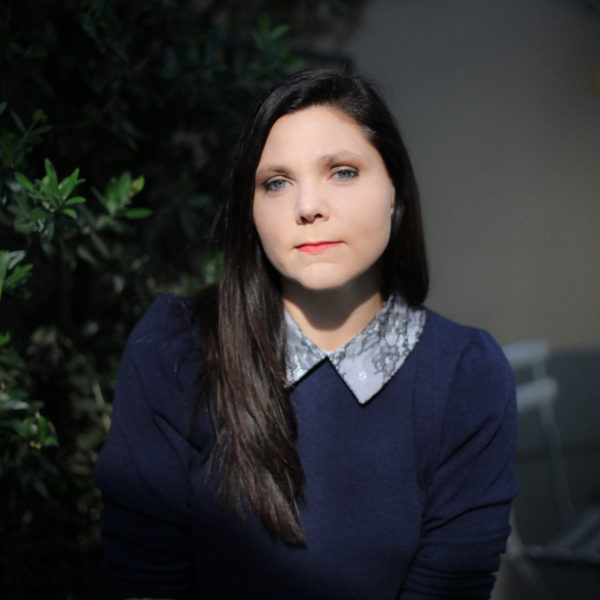
At the recent television critics press tour, there were many new gay friendly television shows intriguing critics. Los Angeles Blade’s Susan Hornik talked with LGBT journalists about their take on the new shows.
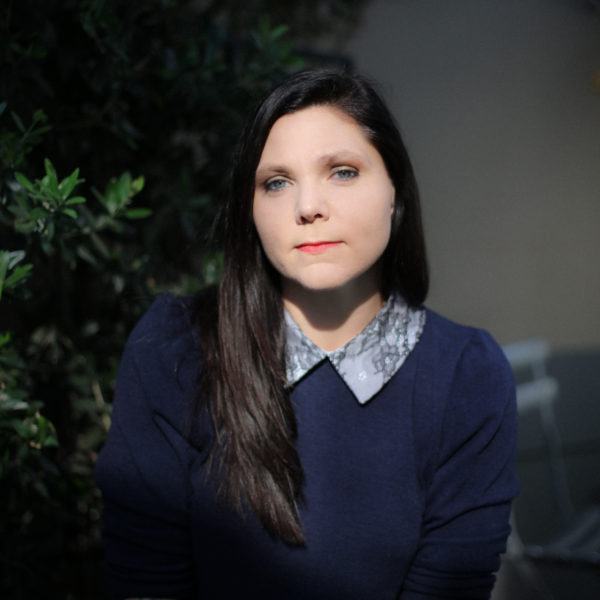
Trish Bendix. (Photo courtesy INTO)
Trish Bendix, Managing editor at INTO
Most excited about “VIDA,” from queer Latinx playwright-turned-TV writer Tanya Saracho. Not only does the show have an all Latinx writers room and Latinx actors, but the plotline and several major characters are LGBTQ. Rarely do we see Latinx leads on TV, and this is a Starz show which means it will be gritty, sexy, and boundary-pushing.
Also, Alan Cumming-starrer “Instinct” will also be of interest, though I’m concerned with CBS’s not-so-great track record on LGBTQ inclusion. Still, having an out bisexual man playing a gay lead on a primetime network show is pretty exciting.
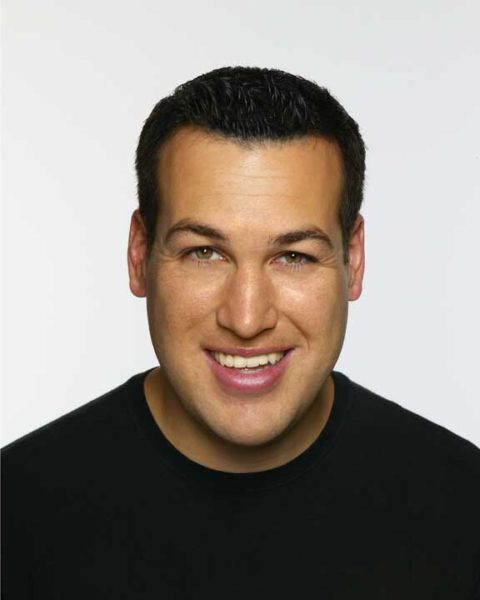
Jim Colucci. (Photo courtesy Colucci)
Jim Colucci, author of the 2016 NYT best-seller “Golden Girls Forever”
The depictions of LGBT characters are more plentiful and more well-rounded than the days of “The Golden Girls,” which was a LGBT favorite at that time. Back then, the occasional guest character would be gay or lesbian, or there would be a gay-themed joke — and certainly there was a gay sensibility about any show that starred a Broadway legend like Bea Arthur.
FX’s’ “Pose,” a recreation of the late ’80s Harlem drag ball era from the prolific gay TV mogul, Ryan Murphy. Trans portrayals are stll in short supply on TV, but “Pose” brings us a wide variety of queer characters — and it’s both fun and fearless.
Even on network TV, the most mainstream you can get in America’s entertainment universe, gay characters are now not just being accepted, but are featured as lead characters. I’m particularly looking forward to seeing more of NBC’s “Champions,” about the philandering owner of a Brooklyn gym who is suddenly presented with the son — half Indian-American and all fabulously gay — he never knew he had.
Other shows have featured gay teens before — memorably, “Glee,” again from Ryan Murphy — but I love how “Champions” capitalizes on the fabulousness of its funny and appealing teen actor, J.J. Totah. NBC’s drama “Rise,” set in the drama department of a working-class Pennsylvania high school, is worth checking out. Although in adapting their source material, the book, “Drama High” by Michael Sokolove, “Rise”‘s producers changed Josh Radnor’s lead character of drama teacher Lou to be straight rather than gay, the series does feature several students facing issues with being trans and coming
Even though I’m still wary of the change– I realize this series, set in the gayest-friendly of places a high school can offer — its drama department — has the chance to say something really interesting, meaningful, and ultimately, entertaining.
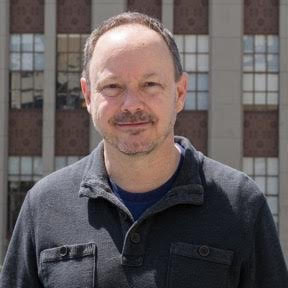
John Griffiths. (Photo courtesy Griffiths)
John Griffiths, executive director, GALECA: The Society of LGBTQ Entertainment Critics
“Instinct,” with Alan Cumming as network TV’s first gay character to top an hour drama, should be a kick, given the star’s unique charms (and he was more than good on “The Good Wife”). Should be a cheeky kick — he tracks serial killers, teaches at a university and writes books (Whoopi Goldberg plays his editor!). He also rides a motorcycle. How butch!
Curious to see how the new Paramount Network’s reboot of the Winona Ryder/Christian Slater cult classic, “Heathers” turns out. In this series version of the teen-horror comedy, one of the three titular cliquish high school meanies happens to be gay. The snark is played by out newcomer Brendan Scannell, who, judging by the witty banter he tossed at the show’s TCA panel, has a serious future in comedy. Another potential standout here: Lilli Birdsell, hilarious in clips as the super-pert white mom to a black Heather (Jasmine Mathews).
It’s not rife with LGBTQ characters, but “American Woman” (also on Paramount, formerly Spike TV) with Alicia Silverstone has lots of allure. Silverstone was adorable in “Clueless,” sure, but also terrifically weird in the recent Colin Farrell/Nicole Kidman thriller, “The Killing of a Sacred Deer.”
And her role here — a dutiful wife and mom who ditches her cad of a husband to belatedly join the feminist movement in the early ‘70s — is irresistible. Gay heartthrob Cheyenne Jackson (“30 Rock”) co-stars as the love interest of Silverstone’s BFF, played by Mena Suvari. The show comes with an authentic vibe and cinematic look, surprising considering it’s created by “Real Housewives” fixture, Kyle Richards (it’s based, in fact, on her mom’s own life trajectory).
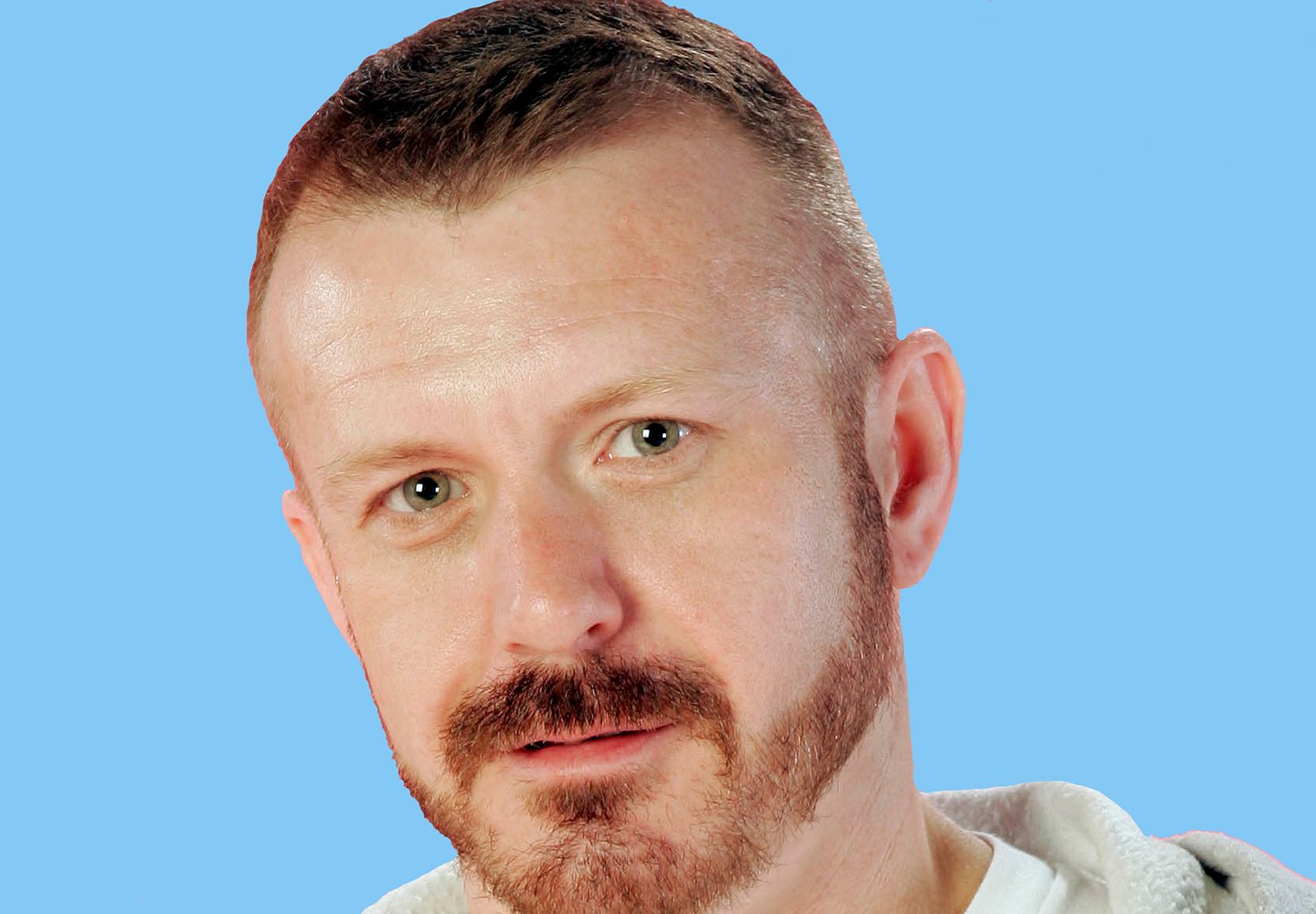
Steve Gidlow. (Photo courtesy Media Village)
Steve Gidlow, TV, MediaVillage
In an age where all that is old is new again, it’s refreshing to see the upcoming new installments of ABCs “Roseanne” tackling a sensitive issue like gender fluidity. With Darlene back at home caring for Dan and Roseanne, her parents are faced with Darlene’s young son Mark ( Ames McNamara) who his experimenting with his fashion style and outward appearance — all much to grandpa Dan’s chagrin.
Even in its heyday, “Roseanne” was never a show that shied away from big social issues so it’s refreshing this reboot is tackling the issue of letting a young person explore what makes them happy head on, even though it might make those closest to them less than comfortable. #beyourself

Malcolm Venable. (Photo courtesy Venable, via Facebook)
Malcolm Venable, TVGuide.com, Senior Editor, West Coast
“Pose”—Only Ryan Murphy could sell a network on a story that juxtaposes the NYC 80s ballroom scene with the Uptown upper crust elite of the Reagan era, while hiring a record number of trans talent in front of and behind the camera! It looks gorgeous and the first footage we saw at TCA included scenes that looked like note-for-note recreations of moments from “Paris Is Burning,” which – no joke – made my heart flutter.
“9-1-1”—Angela Bassett’s husband comes out to her as gay (in the first episode!) and the high camp that Murphy’s team, Brad Falcuck, Tim Minear and the uber fierce Alexis Martin Woodhall (seriously Google her) put together is fun. That translates to seeing the emergency response team, which includes Peter Krause, Aisha Hinds and Kenneth Choi, in insane situations that are hard to turn away from.
“Versace”—Essential television. Lush, vivid, intensely terrifying and relevant for its messages. Great performances from Judith Light, Penelope Cruz and Edgar Ramirez but Darren Criss is life-changing. And, surprise: don’t expect much Versace. It’s about Andrew Cunanan.
“2 Dope Queens”— Jessica Williams and Phoebe Robinson take their podcast to the stage for a limited-episode run on HBO. They’re authentic and revelatory to their experience as black women, but as the packed multi-cultural NYC audiences show, their stories are universal covering nerd life, boy troubles and of course Beyonce. It’s hilarious and they represent hard for their LGBTQ fam.
a&e features
Nia DaCosta and Tessa Thompson on the vital queer chaos of ‘Hedda’
The director and star of the sapphic thriller offer a new vision for what LGBTQ+ representation can be
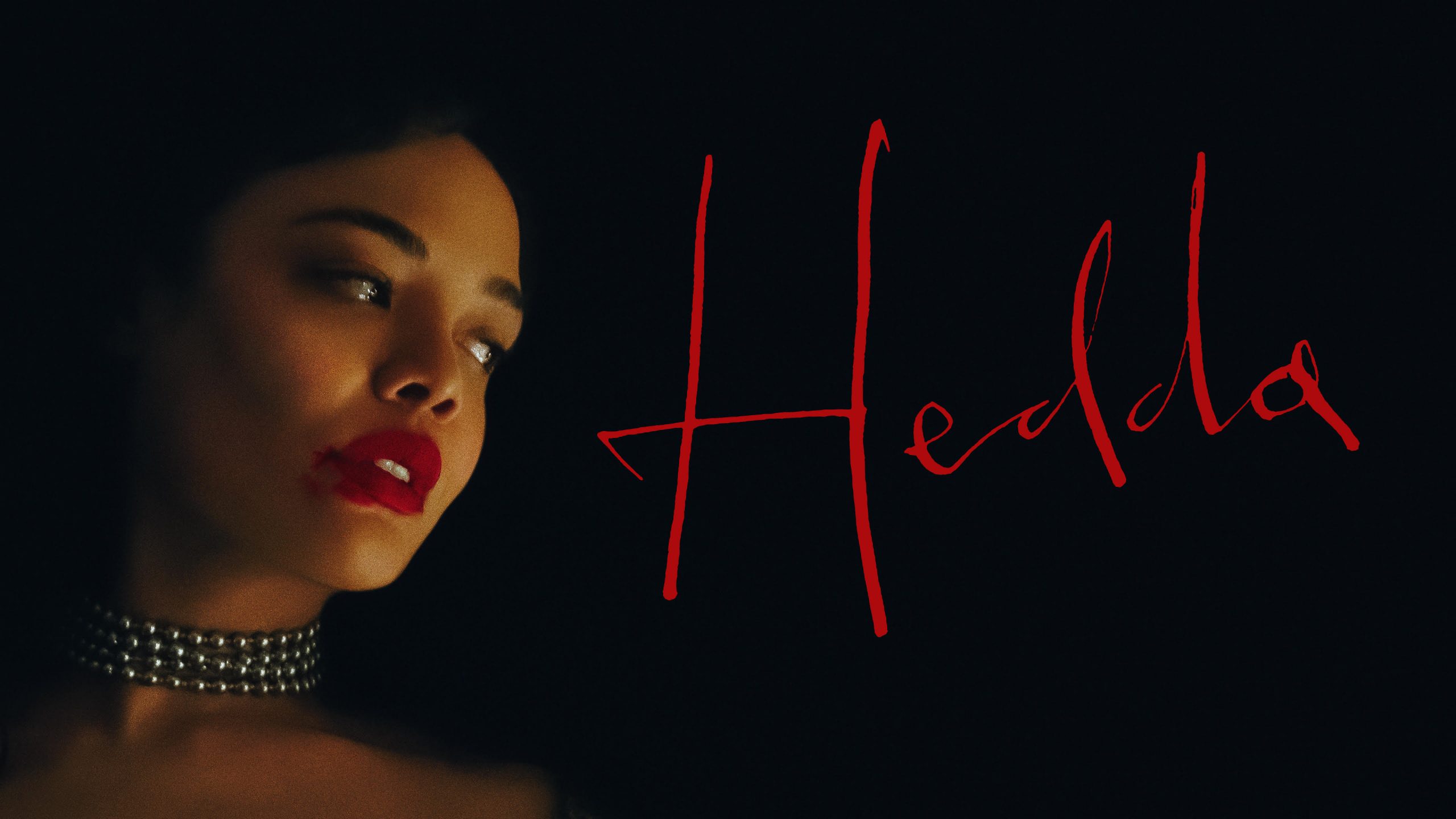
No matter how much hateful rhetoric tries to silence LGBTQ+ communities, queer people will always fight tirelessly to ensure our stories are told. This is shown prominently in film and television; modern viewers are lucky to have an ample library of queer media to choose from. That’s not to say there haven’t been serious losses in this area, with organizations like GLAAD documenting how the rise in hateful rhetoric has exacerbated existing attempts to ban these important pieces of media. But whether it be in the cinema or online, marginalized creators continue pushing to have their projects be created today — and absolutely none of these creations are as deliciously diabolical as Hedda.
An adaptation of Henrik Ibsen’s classic play, this story follows the titular housewife as she deftly manipulates anyone unfortunate enough to get caught in her orbit. Taking place over the course of a raucous house party, the 2025 version of this 1891 tale sees our ‘protagonist’ square off against 1800s gender norms, her inept husband, and the sudden re-emergence of her ex-girlfriend. Along with its jaw-dropping story of betrayal and intrigue, this complex adaptation seamlessly weaves various identities into a narrative that has been celebrated for more than 100 years. It effortlessly intertwines these historic themes with aspects of queerness and racism that audiences will know well, not only creating the best Hedda adaptation yet, but innovating what LGBTQ+ representation can look like today.
As someone renowned for injecting legendary franchises with much-needed nuance, Nia DaCosta knew how important it was to bring representation to Hedda — despite many people advising her against it. “[Speaking] as a Black woman, when you are not a white dude, your identity becomes a ‘complication,’” said the director, when discussing with the Blade what pushed her to translate this typically white, heterosexual character into a queer woman of color. “Something I get asked a lot is, ‘Oh, well Hedda is Black and queer — don’t you feel like that’s stacking too much on top of the film?’ And I respond, ‘Who you are is not too much.’”
It’s a sentiment that the film’s star, Tessa Thompson, completely resonated with. She shared with the Blade, “I think there is something so powerful about queerness [becoming] textural inside of a narrative,” raved the star, whose filmography is filled with projects like Dear White People and Passing that interrogate what true representation looks like in modern society. “Where we get to sort of normalize that and say this is a huge part of our identity, but it isn’t everything about us,” she continued. “Frankly, I wish that more filmmakers thought about that when they’re conceiving characters.”
It’s a conversation that has gone on for years among queer cinephiles: what is representation by and for LGBTQ+ audiences, and what is teaching non-queer viewers that gay people are also human beings? While it is (unfortunately) still essential for movies to perform this kind of education, it’s led to many projects offering a digestible image of queerness that doesn’t actually reflect the experiences of queer people watching. This kind of portrayal has led to studios utilizing diverse identities as gimmicks, ‘complications’ in the narrative that must be maneuvered around rather than vital aspects of nuanced characters. It’s a harmful trend of hollow representation, and it’s one that Hedda combats in every single scene.
“[Hedda is] canonical material that’s been celebrated for centuries,” Thompson explained. “Obviously, that wasn’t from a queer perspective, wasn’t from the perspective of folks of color…and I think, in a way, what we’re trying to say is that our stories also should be canonical.” By using a story that has existed for so long and effortlessly imbuing themes of queerness and racism into it, this creative team showcased how identity doesn’t have to simply be a narrative ‘hook.’ Rather, by recognizing that these significant identities contribute to the larger personality of a character, it adds impressive complexity to make the story even more entertaining to watch. Thompson’s character is a devilish (if not outright evil) anti-hero who champions her intersectional identities while not performatively explaining to audiences the anguish of being a queer Black woman in the 1800s. This allows her many intricacies to truly shine, with the film refusing to reduce Hedda to the discriminations these identities could solicit and instead using them to further flesh out an already intoxicating character.
Nia DaCosta is an expert at weaving diverse identities into stories not specifically focused on those identities (often to the outcry of conservative audiences). “You can’t think of identity as a complication,” she said, detailing how, whether it was Hedda or her foray into superhero cinema with The Marvels, she’s been alarmed at how reluctant so many filmmakers are to center marginalized identities in stories that aren’t about marginalized pain. “Don’t let anyone else tell you that it’s a complication or that it’s gonna make it too confusing or too complex. It’s not true, because we’re all valid, and we all deserve to be at the center of a story.”
By showing not only how easily such a classic tale can be revised with diverse themes but also how greatly improved it can be by them, DaCosta highlights how easily true representation can be accomplished today. Representation that doesn’t tokenize queer individuals or refuse to allow them outside of stories focused on the pains of being queer. Through her ideation and Thompson’s acting, she innovates cinema by offering a truly multi-dimensional portrayal of a queer person of color whose identity isn’t a complication or narrative tactic. And, when asked what she hopes for intersectional stories like this going forward, the Director ended the interview by saying plainly, “I want to see more of them.”
“There’s room for us in every kind of genre, every kind of storytelling. And we’re slowly cranking in that direction, but I think it’s a fight we have to keep having, and we have to keep being forceful about it, and we have to keep showing up in these spaces and planting our feet. That’s what I hope to see more people [doing]…coming in and planting their feet.”
a&e features
Jason Caceres is the rising talent you can’t look away from – not that you’d want to
With three OUTtv series, festival awards, and charismatic energy, Caceres is becoming one of queer media’s most versatile characters
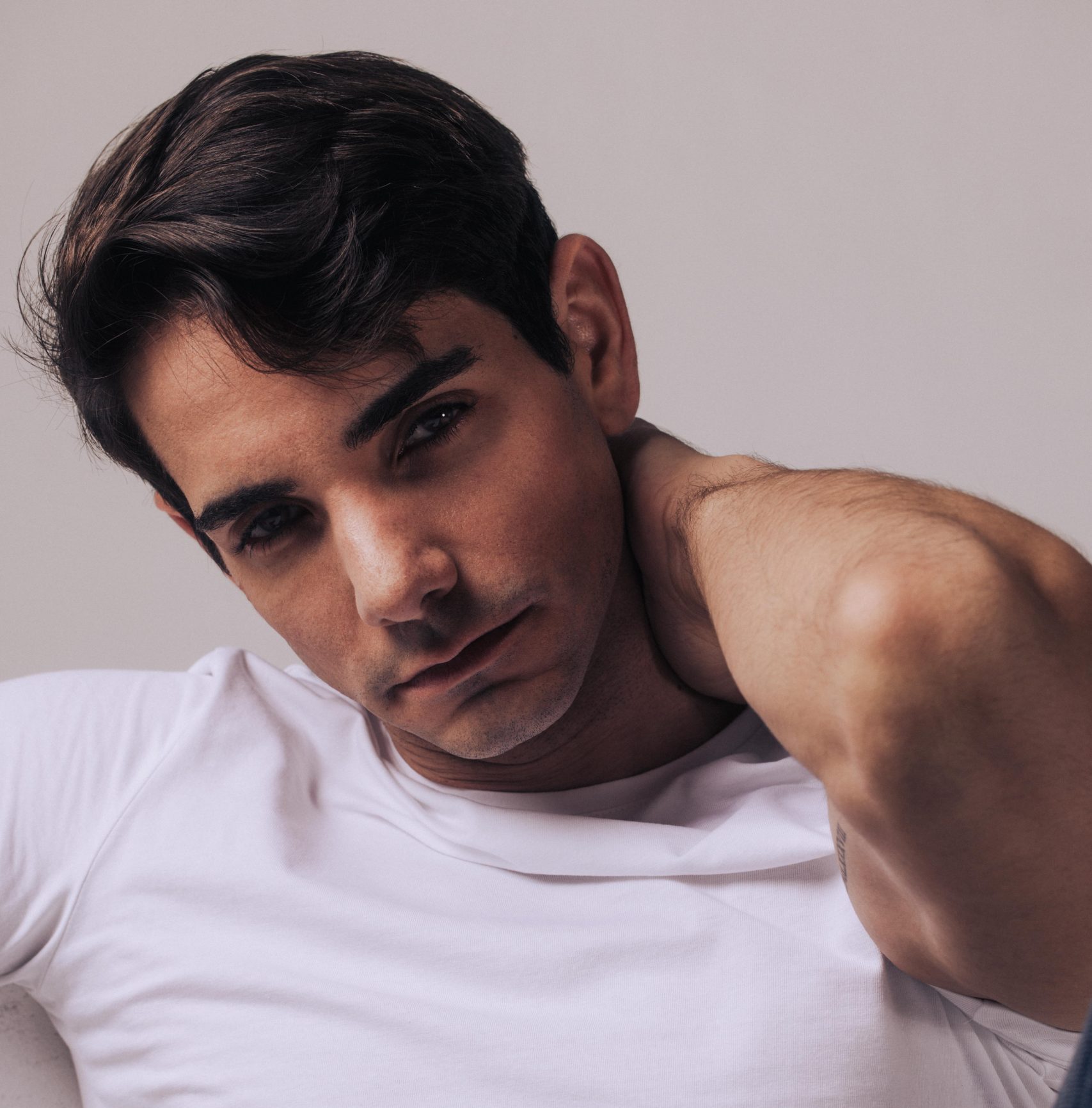
For actor Jason Caceres, the past few years have marked an intentional rise – one defined by a commitment to queer storytelling, a love of comedy, and a layered understanding of what representation in media means. With roles across multiple OUTtv series, including Boy Culture: Generation X, Open To It, and the upcoming Laid Bare, Caceres has become one of the network’s most recognizable and versatile emerging voices. He’s the kind of actor who can get a laugh with nothing more than an eye-roll, a perfectly timed one-liner, or a hair color choice that probably deserves its own content advisory.
Born and raised in Miami to Cuban immigrant parents, Caceres grew up straddling two cultural worlds. This duality informs the emotional sensitivity he brings to his characters. “At home, I spoke Spanish, watched Telenovelas, ate croquettas and bocaditos,” he explains. “At school, I spoke English and ate mashed potatoes and mac and cheese. It helped broaden my horizons…”
To have grown up at this intersection, he says, is precisely what allows him to tap into a range of emotional registers on screen. “It’s given me a sense of empathy that I’m not sure I would’ve had otherwise.” That empathy is evident across his work, whether he’s leaning into camp absurdity or finding solitude in the quieter, more vulnerable scenes.
Caceres’s visibility extends well beyond television. He’s quickly becoming a fixture on the festival circuit, most notably at Cinema Diverse, the Palm Springs LGBTQ+ Film Festival, where he appeared in five programs this past year – an impressive feat even for longtime regulars. “As an openly queer artist, it’s always heartwarming to be received so well by my own community,” he tells the Blade. His long-standing relationship with the festival reflects not only local enthusiasm but also the deep resonance of his work with queer audiences seeking media that affirms their personal experiences and stories.
Still, it’s his turn as Princeton Martinez on Open To It that has captured the widest attention. Caceres’s portrayal is sassy and chaotic, yet he still manages to pull the character into unexpectedly vulnerable territory – a balance he intentionally cultivated when returning for Season 2. “Princeton has seen a lot of growth since the first season,” he says. “Season 2 sees Princeton struggle to grow into himself. We see heartbreak, we see insecurity, we see doubt, and we see love.”
One of the season’s most striking moments mirrored a moment from Caceres’s own life. “[Princeton’s] letting his guard down and, for the first time probably in his entire life, admits that he wants someone to love him the way Greg and Cam love each other,” Caceres recalls. The emotional truth of the scene surprised even him. “It struck me in a way I was not expecting … Right as Frank yelled ‘cut!’ I started bawling like crazy. It was definitely an ‘art imitates life’ moment for me.”
Yet the versatility of Caceres is what truly defines both him and his growing career. As he tells the Blade, “At the end of the day, [Open To It] is a sex comedy that is meant to make you giggle.” He talks about the show with a mix of humor and self-awareness, fully conscious of the role he plays and the space the series occupies in queer culture. At the same time, he remains humble and genuinely grateful for his opportunities. He is quick to credit the queer creators who shaped his own awakening, including Boy Culture and director Allan Brocka. Now, with three OUTtv series to his name and Laid Bare, a queer Agatha Christie-style murder mystery, on the horizon, Caceres has become part of that creative lineage himself. “When I moved to Los Angeles to pursue acting, I knew I wanted to lend my voice to the LGBTQ+ community,” he says. “I was starving for stories and characters that were like me.”
What unites his varied roles is a throughline of joy – a willingness to portray queer characters as messy, hilarious, emotional, desired, and flawed. Caceres is bold, sexy, eclectic, and entirely his own. He is a rising talent whose presence signals exactly where queer storytelling is headed next.
Movies
Even Ariana Grande and Cynthia Erivo can’t save the fractured and messy ‘Wicked: For Good’: Film Review
Jonathan Bailey’s return as Fiyero is a highlight, but this sequel is a major step down from the first film
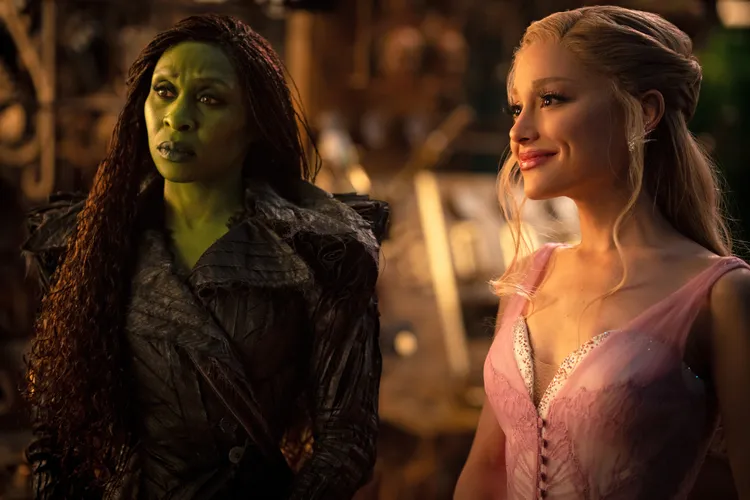
In the first part of Jon M. Chu’s grand screen adaptation of the beloved Broadway hit Wicked, it was Ariana Grande and Cynthia Erivo’s performances that not only grounded the story and its stakes but also expanded the center of the film through their deep exploration of female friendship and love.
The consequences of splitting this story into two parts, and the bloated fan-service that comes this side of The Wizard of Oz and the yellow brick road (more on that later), are detrimental to this sequel, leaving Grande and Erivo to do everything they can to save this film. And try as they might with powerhouse vocals and their fully lived-in chemistry, even these two Oscar-nominated artists find themselves lost in the mix within Wicked: For Good.
This sequel kicks off where Wicked left off, with Glinda now assuming her public-facing role as Glinda the Good (Grande), marrying Prince Fiyero (Jonathan Bailey), and Elphaba (Erivo) hiding away in fear, fighting to survive as everyone in Oz wants her burned alive, as orchestrated by Madame Morrible’s (Michelle Yeoh) vicious propaganda. The film introduces two new numbers, including the pretty forgettable No Place Like Home and Glinda’s fitting solo The Girl in the Bubble, but otherwise sticks fairly close to the source material. Considering that the second act of the musical has always been considered more divisive, perhaps that wasn’t such a good idea.
If there’s one element of For Good that is stronger than the original, it’s Bailey’s performance as Fiyero, who, dare I say, actually has a nuanced and complicated arc! Erivo and Grande, as previously mentioned, are excellent, returning with their unmatched friendship. Grande, in particular, gets an expanded arc this time around, one that allows her to play naive while also tapping into a rare dark side. It’s a fine line she has to play in every moment between Glinda’s outward persona and her true affection for Elphaba. If Erivo ran away with the first movie with Defying Gravity, then Grande has the true staying power of this sequel. However, Bailey, Erivo and Grande alone can’t make this film overcome its deep structural issues.
One of the central problems with the screenplay here is that almost every scene feels like an interstitial moment, where character tensions are being teased, and we’re told (told is the key thread throughout this film) that the stakes are increasing. For instance, the scene when the animals in Oz are being exiled from their home, as we get in pretty much the only moment the animals are actually shown, makes it clear that the only goal with their inclusion is to manipulate the audience into feeling sad. Alternatively, take the first moment Elphaba comes to visit Glinda in secret, which, in part, is supposed to illustrate how in danger Elphaba truly is. Because so much of the Oz action happens offscreen, though, the film never makes us feel just how in danger Elphaba is aside from one moment in the forest.
The issue is that there’s not much we actually get to see of the material consequences here, either from the conflict introduced in the first film or new problems established here. Never do we see how the animals are coping with being forced off their land, nor do we understand how Elphaba, assuming the role of the Wicked Witch of the West and starting to feel like maybe she is, in fact, a monster, actually affects the people of Oz. The action that happens around the characters, and the consequences of Elphaba and Glinda’s decisions, feel completely thwarted. And as the film’s aesthetic turns grey and muddy in the third act, it’s hard to even enjoy what we’re looking at despite the brilliant work of costume designer Paul Tazewell and production designer Nathan Crowley, who properly pay homage to classic MGM musicals in some practically impressive moments.
Elphaba embraces the role of the Wicked Witch of the West, and Glinda finds herself overcome by emotion in a plot point relating to Elphaba’s sister, Nessarose (Marissa Bode), but the structure of the story makes it difficult to know where character motivations actually lie with such an inconsistent tone. Character beats aren’t given time to fully breathe, like with Elphaba and Fiyero’s blossoming romance; As Long as You’re Mine is a great showcase for these two vocalists, but the script doesn’t seem keen on building or developing their relationship any further beyond that.
It’s almost as if Chu and the writers were too afraid to let these characters leading a multi-million dollar four-quadrant epic make messy, sometimes horrible decisions, so when it’s time for Elphaba and Glinda’s climactic duet For Good, there’s not nearly as much catharsis in watching Grande and Erivo’s heartbreaking performances as there should be. And with a 137-minute runtime, there was plenty of time here to explore the messier facets of these characters.
What Chu dedicates more screentime to is The Wizard of Oz tie-ins. And yes, Victor Fleming’s 1939 classic is essential to this story, and maybe there was no way of getting around the Dorothy of it all. But it’s undeniably awkward to watch transitional scenes (scenes is too strong a word here) where Dorothy, the Scarecrow, the Tin Man and the Cowardly Lion move from place to place simply for the sake of tying loose threads together. Because it has to connect to The Wizard of Oz, of course! But is there any entertainment value the audience gets, or stakes present within these moments other than reminding the audience of what greatness they could be watching instead? It doesn’t help that these moments are inconsistent in how they’re filmed, too, and the wide shots of them traveling on the yellow brick road feel like the audience is in CGI land.
With all that in mind, and considering where this sequel falls short, it’s important to remember that Wicked has found its thematic power ever since the original 1995 novel by Gregory Maguire in exploring propaganda and the influence our leaders have on how the public perceives — and often fears — the wrong people. But in For Good, it’s all just too on-the-nose and directly stated to the audience. A more interesting exploration of these ideas might’ve tried to place the audience in a position where we can emotionally understand how easily people can be manipulated and made to fear the people actually trying to save them — certainly a relevant theme to touch on in the times we’re living in.
One moment where the film actually does seem to attempt that is in another brief fakeout with Jeff Goldblum’s Wizard character, and the plan he gets Elphaba and Glinda to agree on before Glinda and Fiyero’s wedding. Unfortunately, this choice is entirely confusing because the audience is already conditioned not to trust a word the Wizard says after the end of the first Wicked. Goldblum has a charming and well-suited number, Wonderful, where he charmingly sings about deception, but it’s clear the film just doesn’t know what to do with the Wizard this time around.
As the film’s opening weekend box office records and audience scores have already indicated, the most die-hard Wicked fans will certainly find something good in For Good. What should be celebrated about this film, in spite of its faults, is the work of the countless artisans who brought Oz to life with practical effects. Glinda’s apartment, in particular, creates a perfect image of the curated bubble she lives in — beautiful yet solitary. But the hard work of Wicked’s brilliant artisans can easily get lost, especially when the film leans heavily into CGI and shots going for “realism.” With its unsatisfying tie-ins to The Wizard of Oz and fractured structure, For Good leaves much to be desired when Grande and Erivo aren’t creating priceless movie magic on screen together.
Movies
Theater classic gets sapphic twist in provocative ‘Hedda’
A Black, queer portrayal of thwarted female empowerment
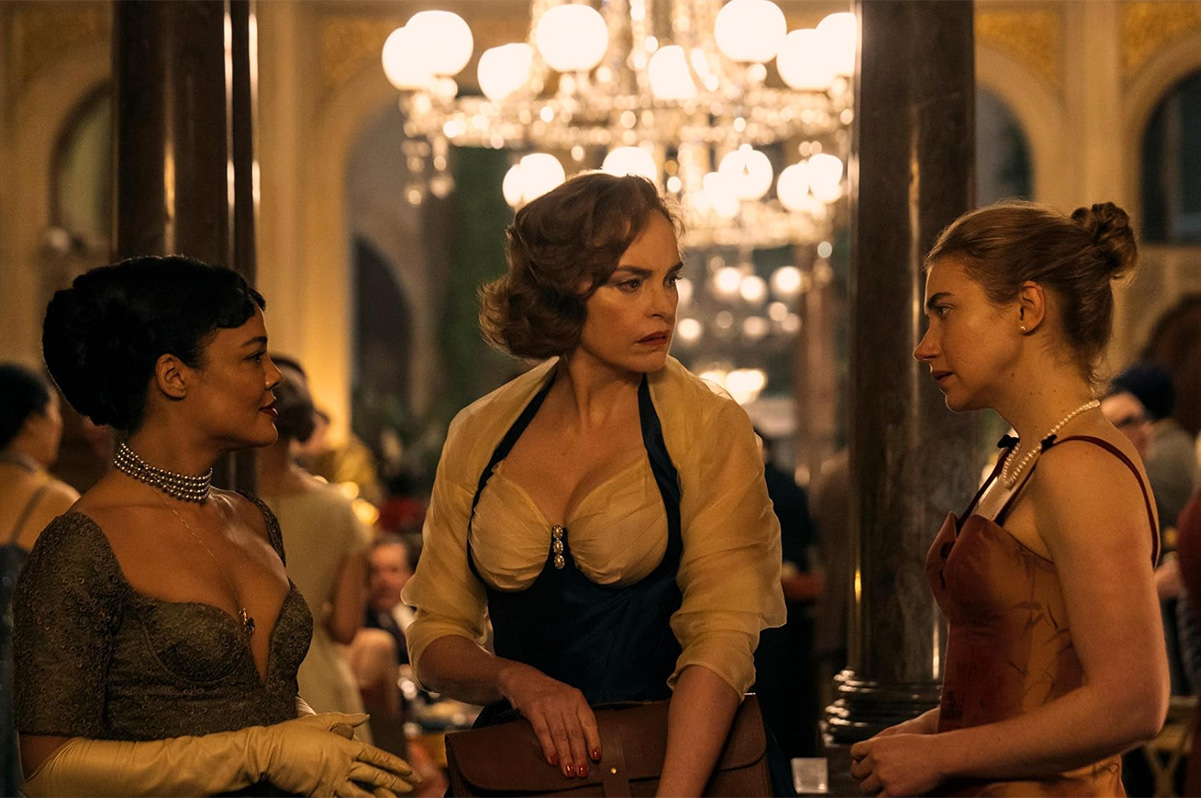
It’s not strictly necessary to know anything about Henrik Ibsen when you watch “Hedda” – the festival-acclaimed period drama from filmmaker Nia DaCosta, now streaming on Amazon Prime Video after a brief theatrical release in October – but it might help.
One of three playwrights – alongside Anton Chekhov and August Strindberg – widely cited as “fathers of “modern theater,” the Norwegian Ibsen was sharply influenced by the then-revolutionary science of of psychology. His works were driven by human motivations rather than the workings of fate, and while some of the theories that inspired them may now be outdated, the complexity of his character-driven dramas can be newly interpreted through any lens – which is why he is second only to Shakespeare as the most-frequently performed dramatist in the world.
Arguably his most renowned play, “Hedda Gabler” provides the basis for DaCosta’s movie. The tale of a young newlywed – the daughter of a prominent general, accustomed to a life of luxury and pleasure – who feels trapped as the newly wedded wife of George Tesman, a respected-but-financially-insecure academic, and stirs chaos in an attempt to secure a future she doesn’t really want. Groundbreaking when it premiered in 1891, it became one of the classic “standards” of modern theater, with its title role coveted and famously interpreted by a long list of the 20th century’s greatest female actors – and yes, it’s been adapted for the screen multiple times.
The latest version – DaCosta’s radically reimagined reframing, which moves the drama’s setting from late-19th-century Scandinavia to England of the 1950s – keeps all of the pent-up frustration of its title character, a being of exceptional intelligence and unconventional morality, but adds a few extra layers of repressed “otherness” that give the Ibsen classic a fresh twist for audiences experiencing it more than a century later.
Casting Black, openly queer performer Tessa Thompson in the iconic title role, DaCosta’s film needs go no further to introduce new levels of relevance to a character that is regarded as one of the theater’s most searing portrayals of thwarted female empowerment – but by flipping the gender of another important character, a former lover who is now the chief competition for a job that George (Tom Bateman) is counting on obtaining, it does so anyway.
Instead of the play’s Eilert Lövborg, George’s former colleague and current competition for lucrative employment, “Hedda” gives us Eileen (Nina Hoss), instead, who carries a deep and still potent sexual history – underscored to an almost comical level by the ostentationally buxom boldness of her costume design – which presents a lot of options for exploitation in Hedda’s quest for self-preservation; these are even further expanded by the presence of Thea (Imogen Poots), another of Hedda’s former flings who has now become enmeshed with Eileen, placing a volatile sapphic triangle in the middle of an already delicate situation.
Finally, compounding the urgency of the story’s precarious social politics, DaCosta compresses the play’s action into a single evening, the night of Hedda and George’s homecoming party – in the new and expensive country house they cannot afford – as they return from their honeymoon. There, surrounded by and immersed in an environment where bourgeois convention and amoral debauchery exist in a precarious but socially-sanctioned balance, Hedda plots a course which may ultimately be more about exacting revenge on the circumstances of a life that has made her a prisoner as it is about protecting her husband’s professional prospects.
Sumptuously realized into a glowing and nostalgic pageant of bad behavior in the upper-middle-class, “Hedda” scores big by abandoning Ibsen’s original 19th-century setting in favor for a more recognizably modern milieu in which “color-blind” casting and the queering of key relationships feel less implausible than they might in a more faithful rendering. Thompson’s searingly nihilistic performance – her Hedda is no dutiful social climber trying to preserve a comfortable life, but an actively rebellious presence sowing karmic retribution in a culture of hypocrisy, avarice, and misogyny – recasts this proto-feminist character in such a way that her willingness to burn down the world feels not only authentic, but inevitable. Tired of being told she must comply and cooperate, she instead sets out to settle scores and shift the balance of power in her favor, and if her tactics are ruthless and seemingly devoid of feminine compassion, it’s only because any such sentimentality has long been eliminated from her worldview. Valued for her proximity to power and status rather than her actual possession of those qualities, in DaCosta’s vision of her story she seems to willingly deploy her position as a means to rebel against a status quo that keeps her forever restricted from the self-realized autonomy she might otherwise deserve, and thanks to the tantalizingly cold fire Thompson brings to the role, we are hard-pressed not to root for her, even when her tactics feel unnecessarily cruel.
As for the imposition of queerness effected by making Eilert into Eileen, or the additional layers of implication inevitably created by this Hedda’s Blackness, these elements serve to underscore a theme that lies at the heart of Ibsen’s play, in which the only path to prosperity and social acceptance lies in strict conformity to social norms; while Hedda’s race and unapologetic bisexuality feel largely accepted in the private environment of a party among friends, we cannot help but recognize them as impediments to surviving and thriving in the society within which she is constrained, and it makes the slow-bubbling desperation of her destructive character arc into a tragedy with a personal ring for anyone who has ever felt like an outsider in their own inner circle, simply by virtue of who they are.
Does it add anything of value to Ibsen’s iconic work? Perhaps not, though the material is certainly rendered more expansive in scope and implication by the inclusion of race and sexuality to the already-stacked deck of class hierarchy that lies at the heart of the play; there are times when these elements feel like an imposition, a “what-if?” alternate narrative that doesn’t quite gel with the world it portrays and ultimately seems irrelevant in the way it all plays out – though DaCosta’s ending does offer a sliver of redemptive hope that Ibsen denies his Hedda. Still, her retooling of this seminal masterwork does not diminish its greatness, and it allows for a much-needed spirit of inclusion which deepens its message for a diverse modern audience.
Anchored by Thompson’s ferocious performance, and the electricity she shares with co-star Hoss, “Hedda” makes for a smart, solid, and provocative riff on a classic cornerstone of modern dramatic storytelling; enriched by a sumptuous scenic design and rich cinematography by Sean Bobbitt, it may occasionally feel more like a Shonda Rhimes-produced tale of sensationalized scandal and “mean-girl” melodrama, but in the end, it delivers a powerful echo of Ibsen’s classic that expands to accommodate a whole century’s worth of additional yearning.
Besides, how often do we get to see a story of blatant lesbian attraction played out with such eager abandon in a relatively mainstream movie? Answer: not often enough, and that’s plenty reason for us to embrace this queered-up reinvention of a classic with open arms.
a&e features
‘Suffs’ star Gwynne Wood wants us to continue to find hope
What a musical about the suffragette movement can teach us about fighting for LGBTQ Rights
Saying there’s a lot of anxiety in the queer community right now is an understatement. With the overwhelming shadow of politicians threatening to take away our rights, it is now more important than ever to try to find hope and not let fear control us. That’s what Suffs the musical aims to teach us how to do.
Gwynne Wood, who plays Lucy Burns, the co-founder of the National Women’s Party, sat down with the Blade to share what she’s learned from being in the musical.
“Lucy never conforms to what other people want her to be. She has this sense of humor that she uses to bring the group together, even in times of intense hardship. I think that playing her, like I would like to be, like that. I always want to bring humor and heart to these times that we’re living in.”
The suffragettes went through an instrumental amount of tribulation to get the right to vote, including going on a hunger strike and being called insane. Yet, they were still able to remain unwavering in their mission to get the 19th Amendment passed.
Even though there has been progress made since then, in many ways, we’re still fighting for our basic rights to be respected. Many states are trying to prevent LGBTQ people from being visible in classrooms through implementing book bans or just outright telling teachers they’ll be fired if they bring up LGBTQ people.
Even though the Supreme Court decided that it was not going to take up the Kim Davis case, which would have upended gay marriage, it felt disheartening to many that it was even a debate in the first place.
However, if there is one thing that Suffragettes can teach us, it is that we have the right to push back against these policies.
“As much as this administration wants to squash what feels like any sense of hope that we have. It’s our right to dissent. Things have been terrible before, but they pushed through. Our ancestors have done so much for us, and it’s our duty to them to fight back. “
Gwynne also felt the uncertainty around the Kim Davis case, as they recently got engaged. Despite that unease, they believe it’s essential to remember that fear should not prevent people from living their lives.
“We weren’t sure what was going to happen, but I think that I want people to know that even as we were getting inundated with scary things coming from our government, it shouldn’t stop us from living our lives to the fullest, and I think that Suffs has helped me to fully embrace that.”
The women of the suffragette movement are a perfect example of not letting fear get in the way of controlling our lives. One way that the real-life Lucy Burns and Alice Paul did this was by creating a sense of found family through living together, in addition to creating a safe space for women to come together to fight against oppression.
One way that the cast has come together to create that sense of camaraderie is through dressing up as different Scooby-Doo characters for Halloween.
“The dynamic between all of us as actors is so special. It honestly makes it easy to have chemistry with the folks I’m with every night because the show is about the relationships between these women. It makes it a lot easier and so much fun.”
Suffs runs at the Hollywood Pantages Theatre from November 18th to December 7th.
Theater
‘Table 17’ serves up hilarious musings on love at Geffen Playhouse
New play from rising star Douglas Lyons makes its West Coast debut
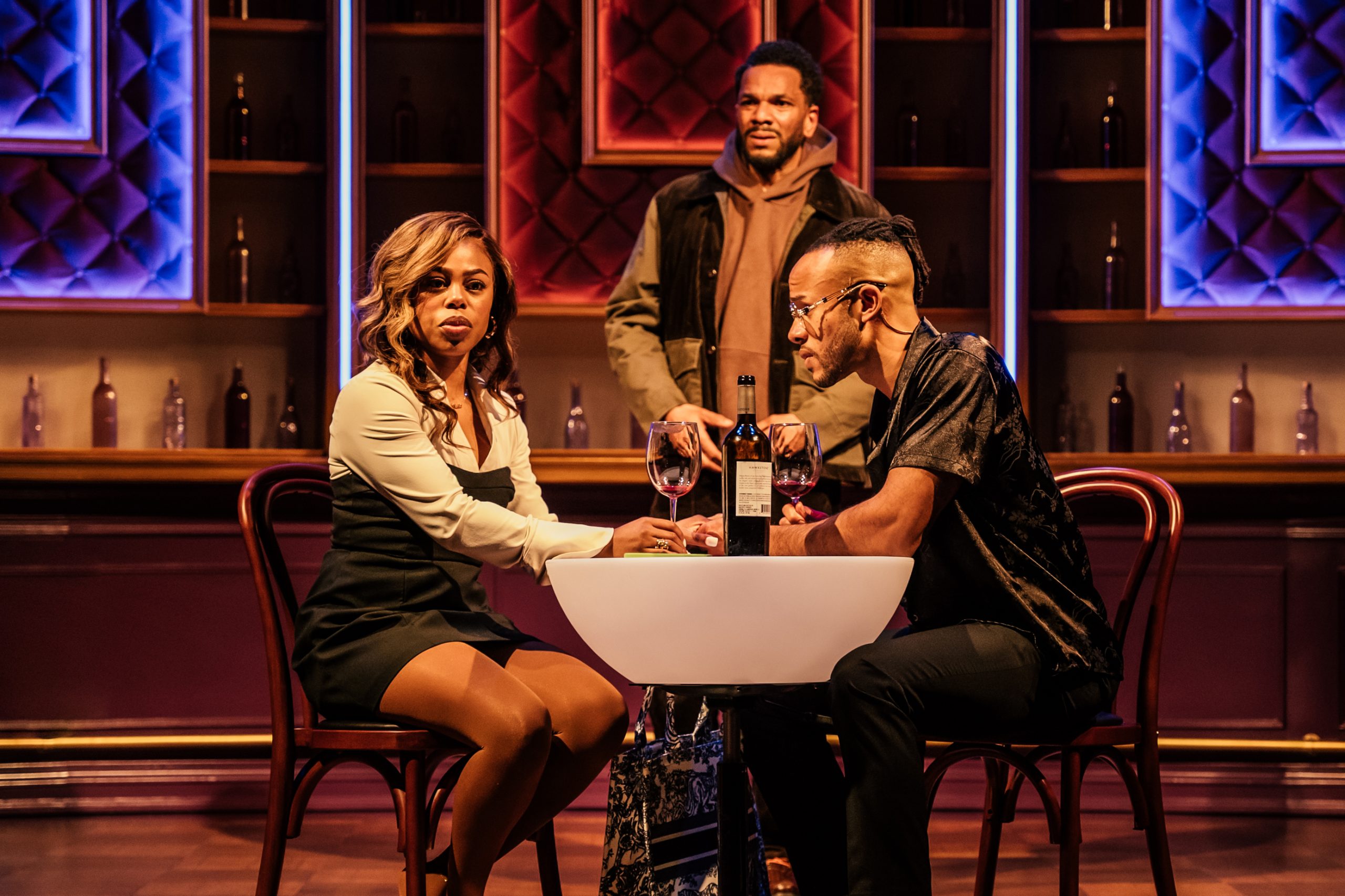
Can we still celebrate the love we have for someone even when the relationship doesn’t pan out? That’s the question at the heart of Douglas Lyons’ hilarious new comedy Table 17, playing at the Geffen Playhouse through Dec 5.
Dallas and Jada meet at a restaurant where they’re seated at the eponymous table two years after their engagement ended to figure out what to do with the feelings they still have for each other.
But there’s more to this meet-up than it first appears, and over the course of their meal, they have to deal with the explosive chemistry between them, the wounds the relationship left them with, and an overbearing queer waiter who gets more entangled with them than anyone would like.
Also, potentially entangled in the show are several audience members. When purchasing tickets, patrons have the option of buying seats at one of five other tables that make up the restaurant set.
Lyons, who’s best known for his GLAAD-award-nominated hit play Chicken & Biscuits, has been making a name for himself with deeply funny plays that tell queer stories, Black stories, and stories about women. His last show in LA was IAMA Theatre’s workshop production of Don’t Touch My Hair.
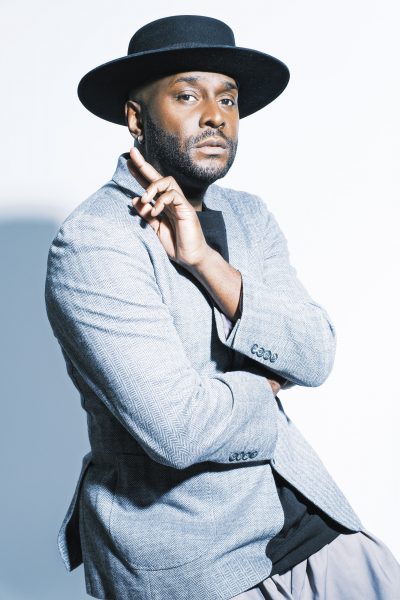
He says his focus on comedy comes from growing up in a large family where laughter “cut through the drama.”
“I grew up as a preacher’s kid. I learned very early on, because I’m a part of two big families on both sides, that comedy is communication. It was how I was raised,” he says.
“I love giggling. I love being silly. And once I found I had the permission as a writer to create work that made not only me laugh, but my friends laugh and then audiences laugh, I went, why don’t we do more of this?”
Lyons’ work fills a noticeable gap in the theatre scene, which tends to promote heavier dramatic works, and where romantic comedy seems to have mostly disappeared from stage and screen.
“In the 90s and 2000s, rom-com was the sweet spot. But we were hoping to love differently then than we are now. Now you’ve got apps. How we fall in love is different now,” Lyons says. “I mean, in the queer community, Grindr and all these apps and stuff, you’re not meeting people at a bar.”
But Lyons says that Table 17 scratches that itch we have to see love expressed.
“It is in our DNA to desire love, and so when you sit down and you see these two people trying their best to communicate with each other, and you can tell that they love each other, but sometimes they miss each other and they make poor decisions around each other, it’s in some way hopeful,” he says.
“I think traditional rom-coms made it feel like a fairy tale. And in 2025, we know love is not that. I want audiences to be reminded that love is worth exploring and fighting for and pushing.”
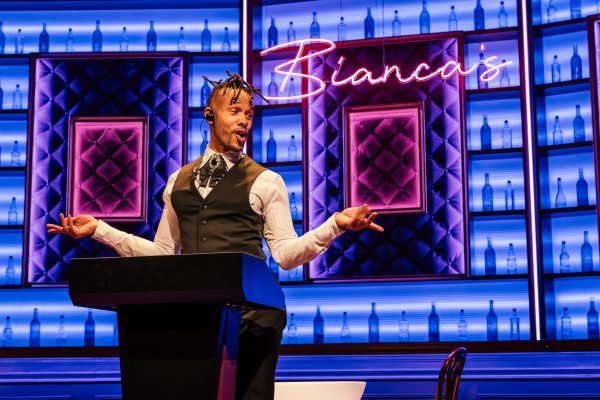
The budding bicoastal playwright says Table 17, fresh from an Off-Broadway run that was deemed a New York Times Critics’ Pick and won two Audelco Awards, is perfect for Los Angeles audiences.
“I say this openly—I think New York takes itself too seriously. I think we sometimes want to be so highbrow in New York that we don’t really engage the community. And what [Geffen artistic director] Tarell [Alvin McCraney] is doing at the Geffen that I’ve witnessed, there are all colors, stripes, genders, ages walking through that door and leaving with smiles. That to me is the kind of theater I want to make,” he says.
Table 17 plays at the Geffen Playhouse, 10886 Le Conte Avenue, Los Angeles, CA 90024, until December 7. Use code: LAB49T17 for $49 (includes per ticket fee) for Premium, Section A or Section B seating. No ticket limit. No refunds or ticket exchanges. Visit geffenplayhouse.org to purchase your tickets. Code also valid for performances Dec.4-7, including weekend matinees.
Join us for Gay Singles Night with Matchmaker Daniel Cooley, with talk-back after the show! The first ten people to email an RSVP to [email protected] can request two free tickets (while supplies last). Otherwise, use code: LAB49T17
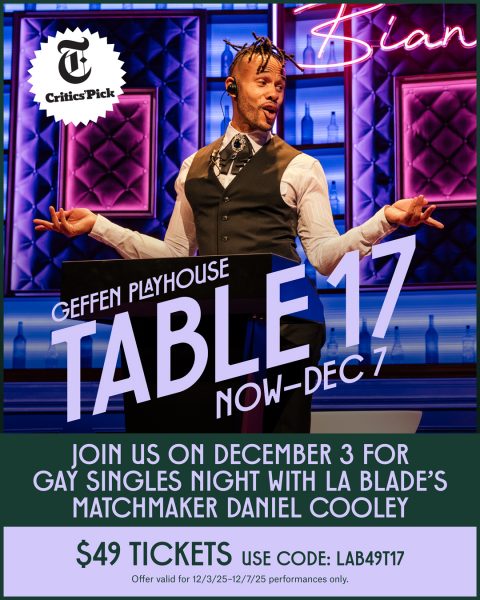
a&e features
The Ultimatum: Queer Love’s “villain” Vanessa Papa is rebuilding comfort in queer spaces
Papa will host the next Lez Brunch on Saturday, Nov. 22nd where the theme is chosen family and friendships.
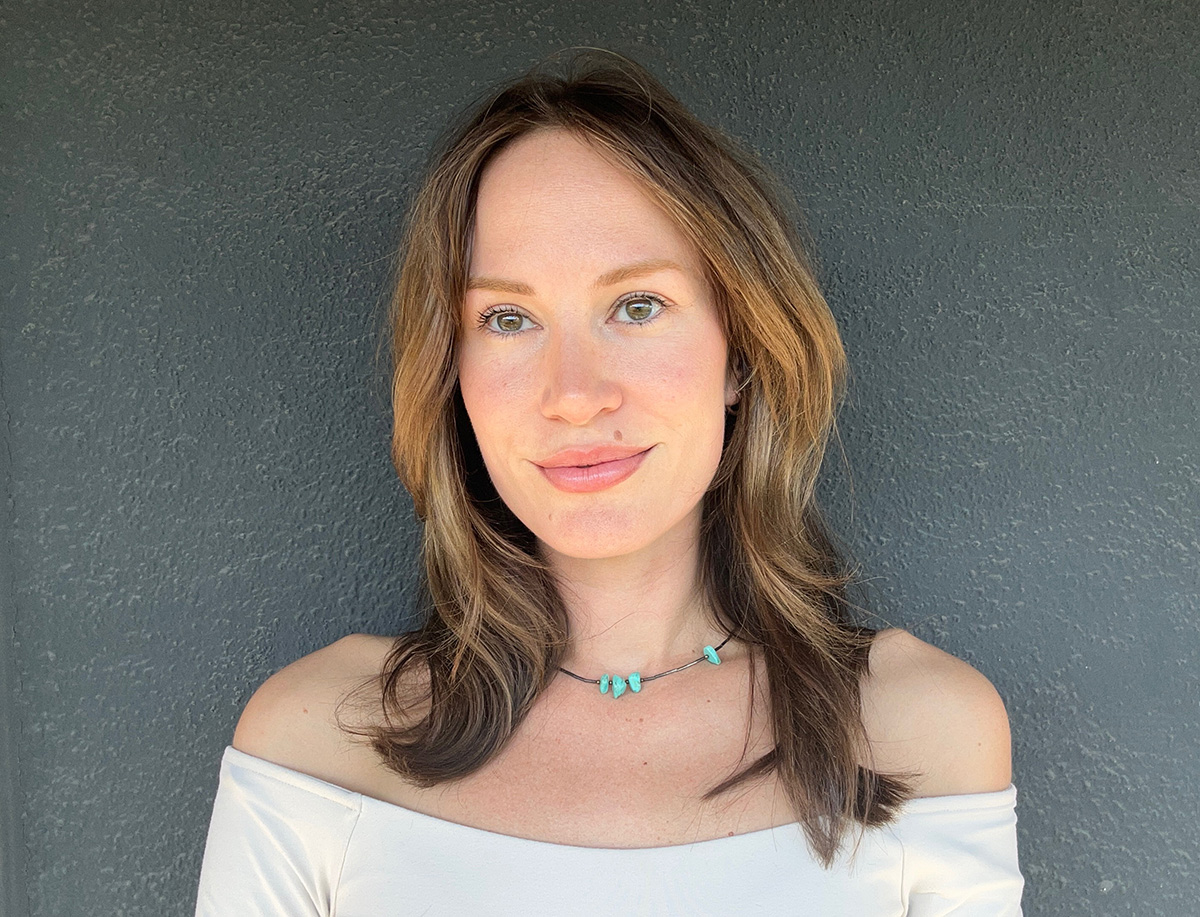
In the spring of 2023, I was finally feeling comfortable identifying as queer. It wasn’t a big revelation so much as a gentle realization that unraveled from a period of intentional time growing my friendships with other queer people.
At that point, I shared a home with a motley of queer artists I cherished: Hanne, Romeo, Oliver, and Ava. We passed snacks to each other from an open kitchen window that led to a patio table where we shared mugs of tea and mini potluck dinners. We read books and talked about old crushes and new ones on the horizon. We made art messily and laughed loudly.
On one rainy night, we cozied up on the couch to watch the sappy sapphic romcom, Imagine Me and You. On another, we projected an episode of The Ultimatum: Queer Love in our living room, gasping and conversing the whole time. I remember scouring internet forums about the show episode after episode, and seeing one of its participants in particular receive consistent waves of backlash from viewers: Vanessa Papa.
Papa was a contentious and oft-discussed character from the series’s eventful run, both in and out of the show. Other participants found her attitude and behavior distasteful and did not shy away from voicing this to her. Viewers lambasted her seemingly flippant attitude towards her partner and the show’s premise. As I prepare to speak with Papa, I keep thinking: what kind of impact does this magnitude of public criticism have on someone’s perception of themself and the world around them? How does she interact with queer spaces today, after being deemed one of the show’s undisputed “villains”?
Papa is the host for the next Lez Brunch this Saturday, where the theme is chosen family and friendships. How has she reclaimed queer acceptance and friendship in her life when she spent the period after the show’s airing hiding, afraid of the “aggression” she was starting to face in her day-to-day life? The Blade sat down with Papa to discuss the impact of being on reality TV as a queer person, how that’s affected how she interacts with queer spaces, and how she approaches maintaining a tight, core chosen family amidst a difficult period of self-doubt that followed the release of the first LGBTQ+ edition of Netflix’s “The Ultimatum.”
Since the show has aired, I’m wondering if the criticism and negativity you received in response still lingers on at all, or if it’s affected the way that you navigate your identity as a queer person?
I think what I encountered very quickly was that the majority of people who were cast were there to put their best foot forward in terms of the public eye. And I didn’t come on like that. I just came on to the show to be my true self, whether I was angry at the time, or sad, or whatever it was. I was just going to be genuinely me. And obviously, when you do something like that, it’s really easy to edit and pick apart the person way more if they’re not putting on a constant mature and happy and calm face, which a lot of them did. I think I understood very early on how I would be edited, but it wasn’t going to change me being me, and it was really hard when the show came out, which was about two years after we filmed.
Basically, my whole life had changed [after] we finished filming, and then before the show came out. I had taken time to travel the world. I got a nose job. I moved to Los Angeles. I was starting a new relationship, and then the show came out, and it was just like: number one, I was in the public eye in a way I’d never been before. And number two, I was so villainized and picked on by the queer community. And number three, I saw things happen in the show that my previous partner had not made me aware of. So it was just a lot of trauma to come on all at once while I was just feeling like I was reestablishing my life without that relationship.
When the show first came out, people were actually aggressive towards me when they would meet me in public. I remember distinctly someone asking me for a picture. They put their arm around me, and while they’re taking the picture, they said, “I fucking hate you.” Moments like that happened constantly for months after the show came out. So I just kind of hid away because people were so cruel. Now, luckily, years later, it’s calmed down.
People tend to have this idea of who I am. It’s really hard to grasp that as the human who went through the experience to have to say: Okay, Vanessa, people who watch the show don’t know what you know, and there’s no way you can fully explain it to them. And you just have to accept that. I used to love being out and open and going to all the queer parties, and then the show came out, and now I have just so much more of a hesitation to be in queer spaces. It’s really upsetting to me, but I’m slowly getting back out there and finding that as the time has progressed, people are softer in terms of thinking they know who I am.
Does that hesitation linger in other aspects of your life and are there certain spaces you just feel more comfortable in now?
I think I feel a lot stronger in just who I am now, so I’m no longer really afraid to go into queer spaces. And if someone were to be unkind to me, I’m just very ready to say, “Okay, I’m gonna walk away now.” I feel like I finally have that bravery, and I’m not just trying to continue to be kind to someone who’s being unkind to me. But in terms of wondering if people are just trying to get to know me or be my friend or get a picture with me because I was in the show, that feeling still lingers. I actually was dating someone for about three years, and that was amazing, and I love her, but we are no longer together.
With that being said, I’m single, and I just have no desire to date, because I cannot imagine going out into the queer world in LA and meeting someone and having in the back of my mind: are they really only on this date because they saw me on the show, or do they think I’m the person from the show? Because the way I was put out there is not really me. I have so much hesitation to get to know someone intimately [since] the show came out, and that’s only something I’ve had to really think about the past few months after my breakup.
I had this person who knew me before the show came out. She obviously wasn’t dating me because I was on a reality show. She had no idea when we started to date. And I look back and I’m like: wow, I got really lucky with that, but I’ll never have that again. Now, I’ll always probably have in the back of my mind: Do you want to date me, actually? Or do you want to date the person whom you saw on the show? Because you can say, “I’m dating the villain from the Queer Ultimatum.”
Did you watch the show with the person you dated after filming had long wrapped? Were you hesitant or anxious to be like: I don’t know how this person I love is going to see me depicted on TV — this almost disembodied version of you?
When I started to date my ex, I had to tell her: I’m going to be on a reality show with my ex. What a terrible thing to tell someone that you’re falling in love with. Number one, I’m going to be a public figure. And number two, you’re gonna have to watch a TV show of me making out with my ex. Crazy. She ended up watching it on her own, so I didn’t get to have the experience with her that I wanted to.
What I can say is, with my family and my friends and people who know me, when they watch the show: they see me. No matter how edited it is and spliced together, they know me. They know my humor. They know my reactions. They know everything. So they are all able to watch it and just laugh at it. But that’s clearly not how the public perceived it.
It was probably very hard for her to watch it, but I think she knew who I was at that point. We had been together for over a year.
It was hard for her to watch it. Was it hard for you to watch it?
Oh, my god, yes. I kept a diary every single day that we were there, because I didn’t want my own reality to get messed up. I would write down who I talked to, what our conversations were. So watching the show, I wanted to scream. “This is not what we were talking about. This is not what happened!” But then I just realized that’s what I signed up for, and I had no real perception of [being on] reality TV before, and I just had to accept it.
I watched the show with two of my best friends, Jordan and Kim, and it was just crazy how often I was pausing it and saying, “Okay, so this is what really happened,” and giving them the rundown. In that moment, I was like, “What the fuck is this?” But then also had to accept there’s no way to change it. I just knew that’s what it was, and I needed to accept it. Whatever you say to add to the conversation, whether you think you’re clarifying something, if they don’t like you and they’re dead set on disliking you, they will use any more information to just compile it somehow.
So I just stayed quiet and didn’t defend myself when my other cast members were coming out and making TikToks about me. People that I love, people I had no beef with, were still leaning into the villainhood of me because it made their social media blow up. And I just stayed silent because I knew there was nothing that I could do at that point to change people’s minds. Because they love a villain, and they had a villain in me.
Do you regret the experience?
It was the worst time of my life. I truly mean that [and] I hope that that remains the worst part of my life. I don’t regret it, because that was the reason that that relationship ended for me, and I genuinely don’t think it ever would have ended without that. That was something that I never would have had the strength to do. It was good for me in that way, but the experience was really a low point. I’m happy it’s in the past.
In this current period of time in your life, what’s keeping you passionate and happy? With the upcoming Lez Brunch theme being chosen family and friendships, how are you leaning into those relationships now?
The past few months are my first months being single, and so I’ve had a lot of time to spend with my friends — which has been so nice. I’ve missed relying on my friends for social situations, because I used to rely so heavily on my partner. It’s been really nice to have free time all the time. When my friends ask me to hang out, I can almost always say yes. And I’ve been doing a lot of reading. I’ve been painting little canvases that I’m going to put on my walls to decorate my apartment. I’ve been doing a lot of karaoke nights.
I’ve been really focusing on acting and honing in on that craft and really applying to projects and finding a new manager and just really setting myself up for success in the acting world. I just want to keep that momentum going. I’m really happy with where I am right now with that.
[With] Lez Brunch, I think there is such a different atmosphere surrounding that, because it’s not: come out late at night when you’re drunk and let’s party — which is pretty much all of the events other than Lez Brunch that I go to or host. It’s more of a hangout experience versus a nighttime event.
[When it comes to chosen family] I have so much empathy for people who are just trying to love the way they want to love, and because of that, they’ve experienced rejection by people who used to love them until they knew this one thing about them. It’s not a bad thing. It’s not a dangerous thing. It’s simply: I might love someone of the same gender.
So I love situations in queer communities where we’re boldly saying: If you can’t have your blood family, you can have your chosen family. We’re all here to support you and make you feel loved. And I feel like that’s what the theme of this Lez Brunch is. We are your chosen family. So come hang out and celebrate, and let’s all outpour love on each other.
Come join The Blade and Vanessa at Lez Brunch:
📅 Saturday, November 22 · 12PM–4PM (or as late as we want!)
📍 Blue Birdy
8917 Sunset Blvd, West Hollywood, CA 90069
Next to the world-famous Whisky A Go Go on the Sunset Strip
Movies
Looking through the steam: ‘Sauna’ and queer intimacy
Directed by Mathias Broe, ‘Sauna’ follows a rare trans-cis romance, unfolding inside Copenhagen’s sauna scene.
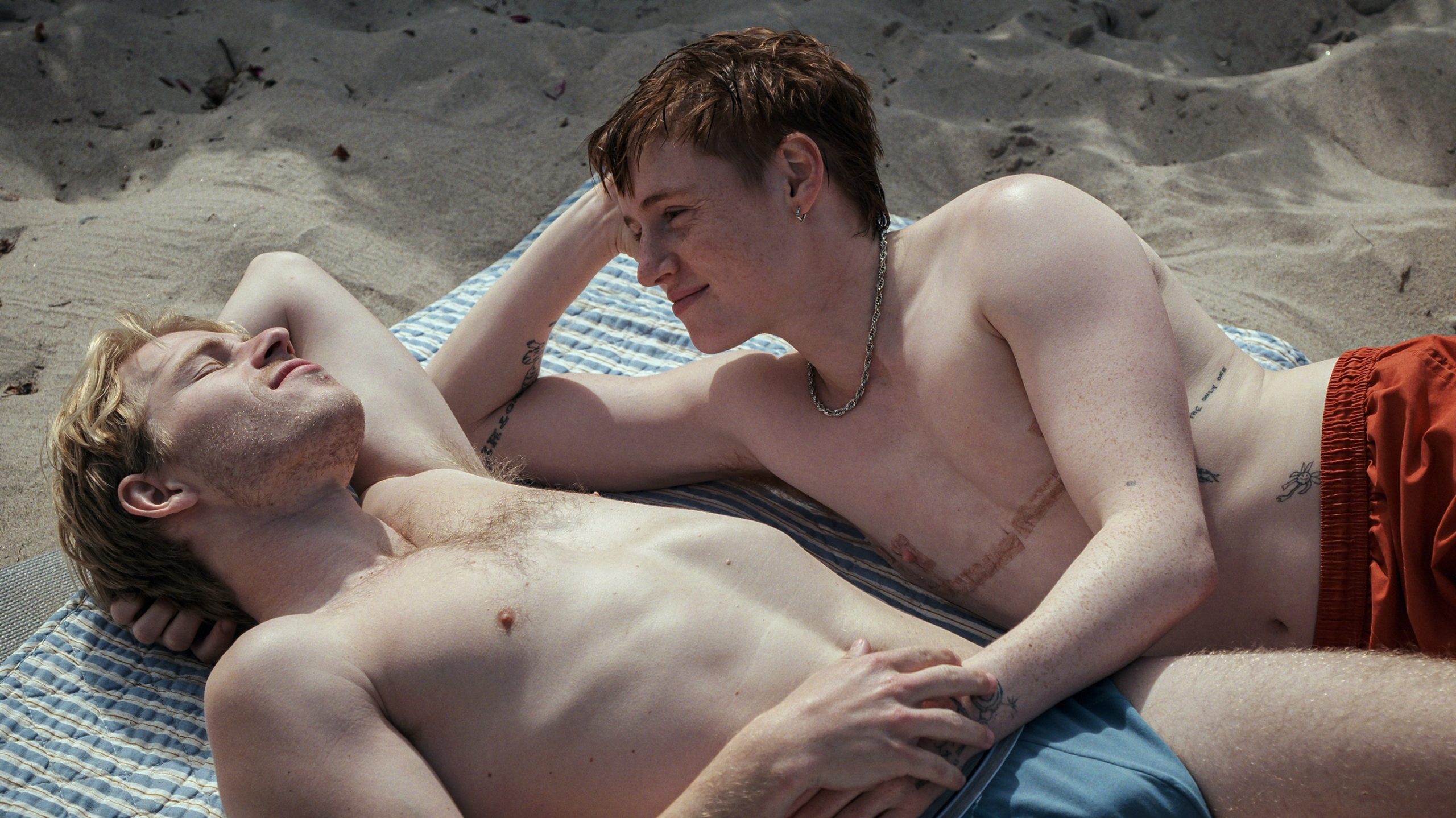
Sauna offers something rare in global queer cinema: a love story between a cis gay man and a trans gay man that refuses simplification. Releasing November 18 through Breaking Glass Pictures, the film marks Danish director Mathias Broe’s atmospheric adaptation of Mads Ananda Lodahl’s acclaimed book. Set amid the charged atmosphere of Copenhagen’s gay sauna scene, it traces the evolving bond between Johan, played by Magnus Juhl Andersen, and William, played by Nina Rask – two characters seeking connection in a world that often misunderstands them both.
Broe isn’t a festival-minded “queer indie” director so much as a working filmmaker embedded in his craft. When he spoke to the Blade, he called from a bus in Denmark, commuting between the film classes he teaches. The detail fits: his approach to Sauna is both grounded and nuanced, shaped by the rhythms of real life rather than industry polish.
For Broe, the film emerged from a desire to make queer life visible in a way that felt truthful to his own world. “I’ve been wanting to do a queer film as my debut film for a really long time … In Denmark, it’s been really hard to find films and stories that I could relate to,” he tells the Blade. When Broe set out to make Sauna, he pursued representation grounded in lived experience rather than abstraction, asking himself, “How do I get the people that I surround myself with onto the big screen?”
Though the film is groundbreaking for featuring Denmark’s first transgender actor in a leading trans role, Broe insists the focus remains on the humanity of its characters. “It was most important to talk about a love story first and foremost … The story is a very universal story about love and identity and belonging.”
Sauna is not a standard bathhouse memoir. It confronts the realities of being trans in cis spaces – and of being cis while dating trans people – inside a setting often mythologized as liberated but marked by its own exclusions. For American readers, the sauna functions much like a bathhouse: a place where intimacy is typically low-commitment and fleeting. Johan moves through it in exactly that way, cycling through encounters that rarely carry emotional weight. Broe said the film deliberately critiques this pace and disposability of app-mediated intimacy: “We wanted to show the side of Johan having these fast hookups and not really taking the time to actually look into who he was meeting.”
But Broe is quick to clarify that Johan is “longing to experience humans” instead of solely casual encounters. That longing crystallizes in his developing relationship with William – a connection that complicates Johan’s habits of fleeting intimacy. Without spoiling too much, the bond between Johan and William hovers somewhere between love and infatuation, a tension that deepens the film’s emotional stakes. Inside the sauna, this dynamic sharpens: the space becomes, as Broe puts it, “a labyrinth, an emotional landscape … searching in the dark… an image of his loneliness and longing.” It’s also where the limits of inclusion inside queer spaces come into view. Broe has seen audiences register this, noting that “a lot of cis gay men” have approached him after screenings saying, “Whoa, I never thought about this…”
The LGBTQ+ community is often described as inherently inclusive, but that narrative obscures both historical exclusions and the ones that persist today. Denmark – frequently imagined as a kind of queer utopia –illustrates this tension. “ I think it’s one of the safest places to be queer,” Broe tells the Blade, “But at the same time, the culture is quite conservative … language-wise and culture-wise, we’re very much behind.” He’s equally candid about the systemic barriers trans people face in healthcare. This pressure weighs heavily on William’s story in the film, where gatekeeping remains the norm: “Someone else has the power to judge if you are who you say you are … some doctor grants you access to who you are as a person.”
What keeps Sauna emotionally grounded is Broe’s insistence on flawed, human characters: “We have to create and tell a story about real human beings and not these flawless characters.” Johan’s arc throughout the film is intentionally non-linear. There is no classic hero’s journey or archetype that Johan fits neatly into. Broe insists that Johan “keeps repeating his own mistakes.”
In the end, Sauna expands queer cinema by refusing to neatly categorize its characters and audience. “We box ourselves so intensely in sexuality and identity,” Broe says, emphasizing that William’s story is central precisely because it challenges those boundaries. As he puts it, “The film tells the community that you can be trans and gay at the same time.”
Broe’s film asks viewers to sit with the messiness of love, transition, and vulnerability. In doing so, it opens a space – one that is steamy, dark, and perfectly imperfect – where queer stories can exist in all their complexity.
Books
David Stern’s ‘Elevator Boy’ is a visceral deep dive into Weho’s queer past, but serves as inspiration for its future
In today’s political and social climate, well-told stories like Stern’s are imperative for the queer community to understand what kind of trailblazing energy we come from, and what we can do to overcome.
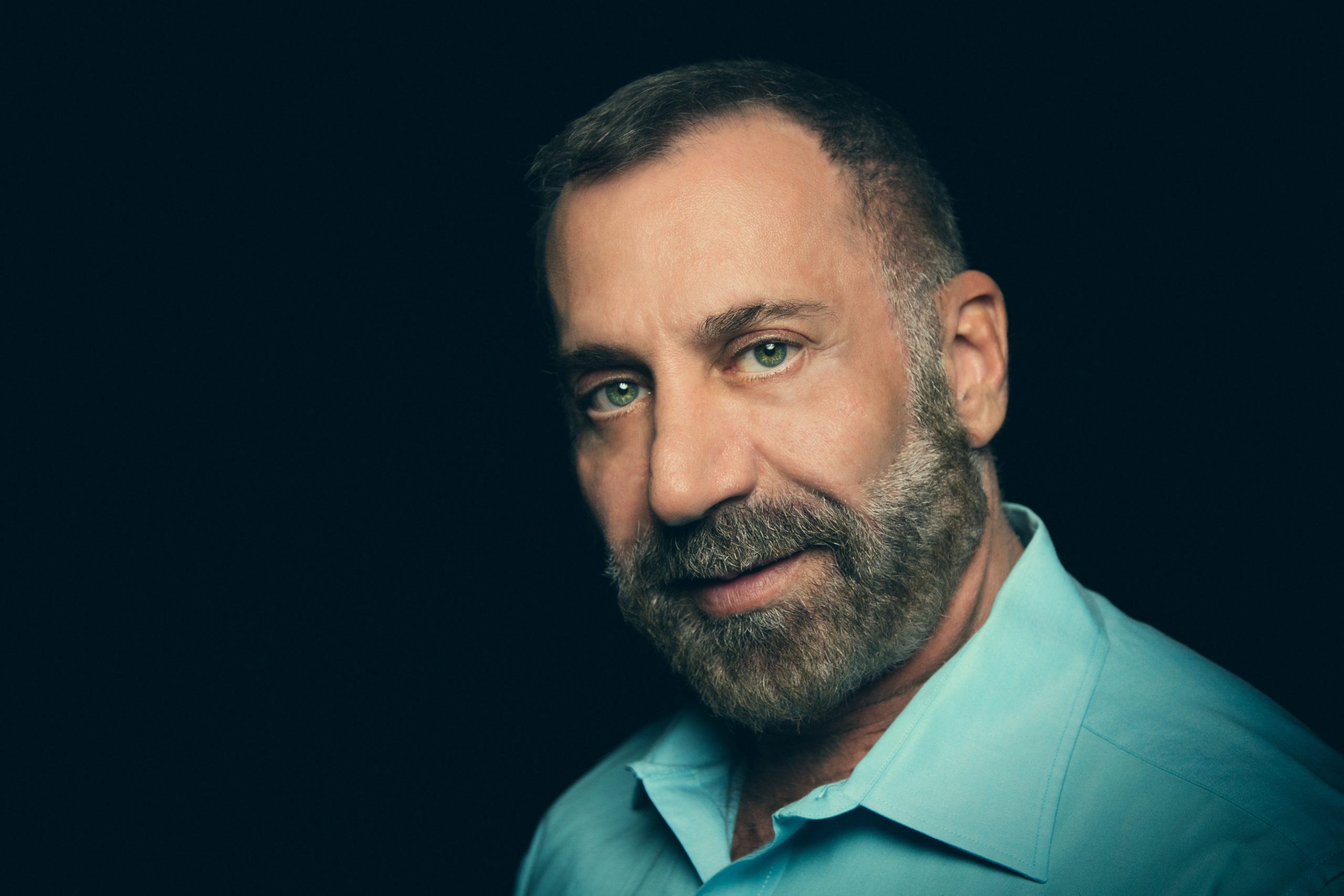
There was a time when every gay man in West Hollywood was walking around with either a copy of Frontiers or In Magazine, held tightly in hand. Not only did they feature a bevy of hot guys, but they also included queer celebrity interviews, hot topics, and a weekly photo diary of the community that every socialite thirsted to appear in. Beyond serving as queer pop culture’s pre-tech answer to social media, they were also brands that united a community that continued to lose members to the AIDS epidemic. Looking back, they weren’t just glossy magazines; they served as part of the glue that kept Los Angeles’ queer community together.
Much of the publications’ success was due to David Stern, who went from top salesperson to co-owner of both magazines. There wasn’t anyone in town who didn’t know Stern. He brought business sense and sincerity to the company and knew how to be the life of the party. He helped the magazines, and in turn, the community, thrive.
It’s hard to envision that version of David Stern as the young boy who showed up on Hollywood Boulevard, as a runaway, with literally no clothes or money to call his own. This young boy was running away from a volatile and abusive household where his sexuality served as his undoing; he was running away from the PTSD he acquired when his father fell down an elevator shaft to his death when Stern was just 15 years old. By the grace of a drag queen, perseverance, and the queer community that, when times get tough, can support its own.
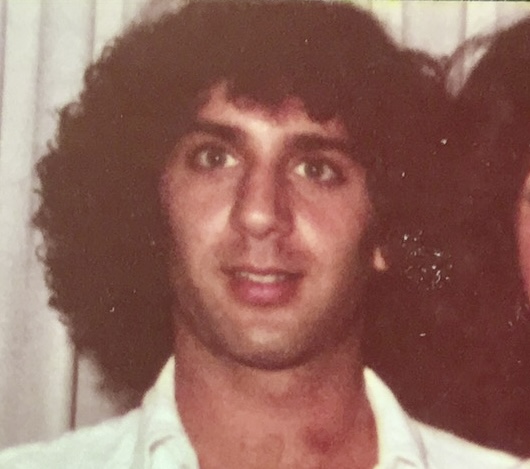
Elevator Boy, as told from an intimate and very naked point of view, tells the story of how he overcame a tumultuous past to become the man who ran a media empire. The story is not a bed of roses, and his rise to success was not without even more cuts and bruises. Stern does not shy away from the details here as he dives deep into his past. Drugs, sex, AIDS, friendship, and an unhealthy relationship with his mother all play roles in this tale.
Stern does not stop his story with his success. He is not afraid to tell the whole truth, and nothing but the truth, and shoves a spotlight into the seedy and illegal practices that were happening at his publications, unbeknownst to him. The empire was taken away from him, and eventually crumbled. Despite the challenges that Stern has faced throughout his entire life, the novel is not doom and gloom. There is a strong spirit here, a queer joy, that describes how our queer courage and perseverance will get us through. Our real family is made up of those whom we choose, who have been there for us unconditionally. This book is an inspiration. We can get through anything.
Stern started Elevator Boy over ten years ago, when he walked away from the Frontiers empire. It took that long for him to be able to face his past and put it down in words. The pain, the joy, the good, the bad, it is all here. What a moving and truly intimate life share that not only tells a compelling personal story of survival, perseverance, and hope, but also shares a slice of gay history that all generations should be exposed to.
In today’s political and social climate, well-told stories like Stern’s are imperative for the queer community to understand what kind of trailblazing energy we come from, and what we can do to overcome.
We had the opportunity to talk with Stern about it all. He did not hold back.
What was the final inspiration to tell your story?
I want to use my story to raise awareness that the rate of homelessness for LGBTQ youth is the same today as it was in the mid-70s, when I ran away from home and ended up on the streets. That rate is 120% higher than their heterosexual peers in the same age bracket.
Why is now the time and not before?
It’s been a little over a decade since my career came to an abrupt halt after 26 years of serving the community with my publications, Frontiers and IN Los Angeles magazines. Plus, I recently turned 65. If not now, when?
Your story is one of complete resilience. To what do you attribute your insistence on overcoming all your many challenges?
Thank you for acknowledging that. Since every chapter is a song title, I will refer you to it. “I Didn’t Know My Own Strength” by our dearly departed diva, Whitney Houston. (chapter 18) She sings my feelings with such passion. When I was younger, I would say, sheer defiance. As I’ve grown older, I would say that having tenacity and believing that everything happens for a reason are important. Try to learn, and in my case, re-learn the lessons from the journey.
What do you want our current younger queer generation to understand most about the era you came out in?
I would say the common thread of the teen runaways of the ’70s and the AIDS survivors of the ’80s and ’90s is how the LGBTQ community came together and took care of their own. From Sugar Love, the transgender hooker who rescued me on Hollywood Blvd at 16, to all the lesbians who stepped up to take care of their dying brothers in the face of AIDS. It was a community bonded in survival.
The AIDS epidemic plays a big part in your life. What comes to mind when reflecting on that time?
Since I think lyrically, I’ll say, “I’m Still Here” in E-flat, written by Stephen Sondheim. Now to be serious… AIDS taught me everything I know about life after death and how to communicate with those on the other side of the veil. It reinforced the lesson I learned the day my dad fell down the elevator shaft: life can change on a dime, and take nothing for granted.
It must have been bittersweet visiting your past. How did you mentally get through the writing process and rehashing difficult parts of your life?
This was a ten-year writing process. It started with me being so depressed that I couldn’t function. I’d morphed back into feeling like a worthless, homeless teen instead of a successful publisher. I began writing about that time period, which is the first chapter of my book, Hollywood Nights. From there, I wrote down songs that gave me a sense of memory, and I listened to them as I danced around my house, remembering while I laughed and cried at the absurdity of my life.
I will say that writing what became the second and third chapters of the book about my attempt at suicide sent me into two years of EMDR therapy to help with processing the memories. PTSD has created some interesting survival skills I was not aware I had.
Forgiveness can be difficult for many of us queer folk. Your relationship with your mother was tumultuous, to say the least. How did you get to a point of forgiveness, and why was that so important?
I think a bigger question is, how did my mother get to a point of forgiveness with me? I caused her so much grief when I was growing up. When I got sober at age 27 and turned my life around, our relationship had room to grow into a beautiful friendship because I was showing up as a functioning human being and not a raging drug addict.
The areas of forgiveness that have been more challenging for me are with my former business partners. I return to a very simple philosophy. I don’t know what life lessons they were meant to learn through our shared experience. I can only ask, what lessons am I supposed to learn? In the end, it comes down to forgiving myself most of all.
Loss also plays a big part in your book. What is your message to those who have dealt with great loss in the queer community?
Everybody grieves differently. Be kind and gentle with yourself and others. I can feel the presence from the other side; some can’t or don’t believe that. To them, I say, find comfort in remembering their smile, the quirky things done by the departed that make you laugh, and cherish the time you had.
Was it hard to leave West Hollywood and start a new chapter of your life?
Surprisingly, no. My husband and I met in Palm Springs nearly 20 years ago, so moving to the “scene of the crime” was a beautiful full-circle moment for us.
What do you miss most about West Hollywood of yesteryear?
My own youth. A thriving print media with trusted journalists on the ground vetting and telling our stories, and the infamous West Hollywood Athletic Club.
What is the mission of your book?
To bring hope, uplift, and heal, while preserving an era of LGBTQ history.
What do you want audiences to walk away with most?
If I can overcome all the obstacles in my life, you can rise above yours, too!
You also dive into a controversial and tumultuous time in queer print media in SoCal. You catalog your rise and fall in the industry and the corruption that took place. Why was it so important to come out and tell the story?
There is an effort underway to erase our history. I have always provided platforms for the voices of the LGBTQ+ community. We will not be erased. I will not be erased. Our history is important, so I’m setting the record straight. Frontiers Media was a pioneer for the LGBTQ community. I am just walking in my shoes again. Pioneering the power of LGBTQ+ voices, and that voice starts with me.
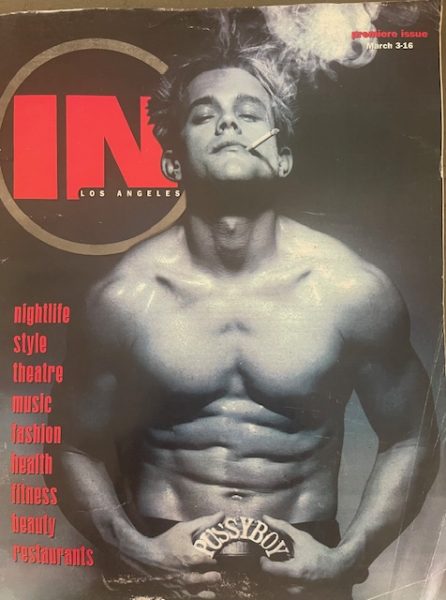
You saw the evolution of queer media and were a part of it. What is your current take on queer media – what is it getting right, what is it missing?
Regarding queer media, I’ve been out of the loop for a decade, but I will share my thoughts on the state of media in general. The following is the Preface of my book:
TODAY, AMERICA IS FACING A MEDIA CRISIS. It began in the 1980s when AIDS, ignored by the mainstream press and government, was raging on. Congress eliminated the Fairness Doctrine that opened a Pandora’s box, allowing the news media to turn into a tool for brainwashing. A functional, modern society needs courageous, trusted journalists on the ground to verify stories and report facts. Trusted news sources are shrinking as the media landscape becomes increasingly fragmented. Future generations will be trapped in this tower of babble, never distinguishing fact from fiction as the hope for freedom and justice fades. Society must find its way back to the earnest quest for truth. In the mid-1970s, at age sixteen, tragedy, fear, denial, and wild abandon turned my world upside down. I ran away from the newly developing suburbs of St. Louis. The parks and back alleys of the U.S. were home to over a million runaway youths. Sexual liberation defined the era. Compared to their heterosexual peers, the homelessness rate among LGBTQ+ youth was 120% higher. This ratio remains unchanged today. Elevator Boy is set in a time when news didn’t drown in the chaos of alternative facts, and meaningless opinions weren’t passed off as truth. Our anti-hero struggles with PTSD from childhood trauma, while society suffers from the same ailment caused by electronic information overload. Sound bites disguised as news are short-circuiting the system. Recognizing the illness is half the battle. Let the healing begin.
How does it feel to now have your life completely out in the open? There’s no going back.
It is completely freeing and healing.
What is your message to the younger queer generation?
Be kind to each other, and remember that Snapchat, TikTok, Instagram, or whatever, are not news sources. Learn how to vet facts.
David is currently working on his next book, a volume of poetry titled “The World of Rhyme and Reason.”
Elevator Boy – An Otherworldly Memoir is available on Amazon, Barnes & Noble, or wherever books are sold.
Events
GARRAS — a night of fame, fashion, and community.
This annual fashion show brings together Los Angeles’ trans community in the most glamorous way possible!
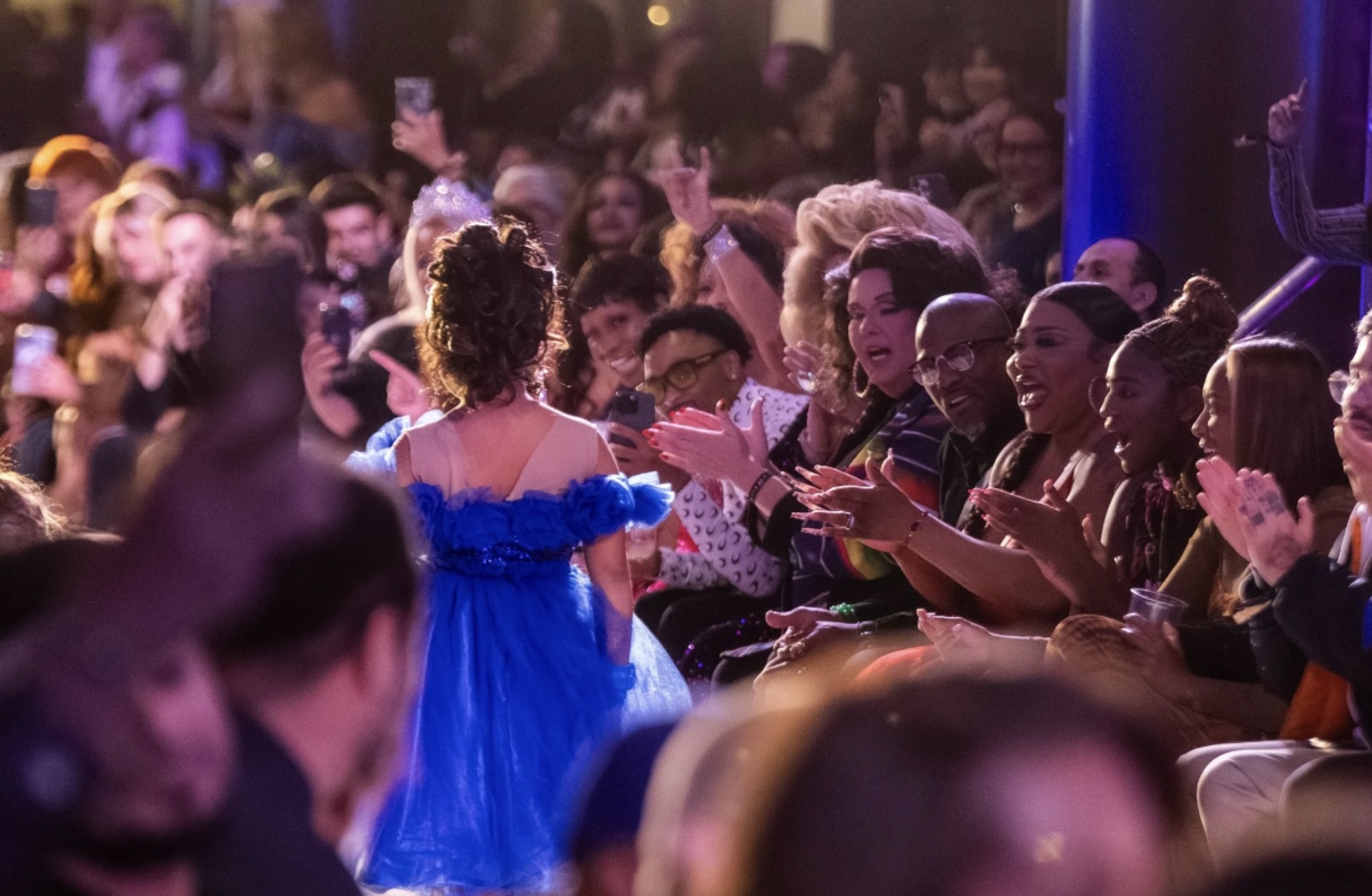
It’s undeniable how much fashion has been involved in the fight for Queer liberation. Whether it be glamorous gowns or sharp suits, one’s ability to dress as their most authentic self has always been integral to the push for LGBTQ+ rights in this country. Los Angeles is lucky to have multiple venues that encourage folks to come as their truest selves — among the best nights of self-expression is the beautifully ingenious TransLatin@ Coalition’s GARRAS fashion show.
This showcase of Los Angeles’ best designers has become an annual celebration of this city’s trans community. Featuring glamorous decorations, a bustling crowd, and a runway filled with gender-expansive models decked out in truly jaw-dropping fashion, it stands as one of the most exciting evenings LA has ever seen. And while GARRAS (which stands for Groundbreaking Activism Redirecting & Reforming All Systems) has always fought against transphobia, 2025’s iteration promised to be bigger and better than ever in response to the rising discrimination we’ve seen in recent months.
“It’s beautiful to create this space where we can come together, celebrate joy, celebrate the diversity, the beauty, the uniqueness of the trans community! And what better way to do it than with fashion — we are one of the most fashionable communities!“ Said Maria Roman-Taylorson, TransLatin@ Coalition’s Vice-President & COO. “We’re just excited to give a platform for folks to have a good time too, in such a horrible political landscape.“ It’s a sentiment that the organization has held tightly to in recent months; while transphobia has always existed in this country, the current presidential administration is intent on villainizing this community and stripping away their hard-earned rights. Yet despite this year being filled with constant attacks, the TransLatin@ Coalition has not slowed down. Whether it be through GARRAS or the organization’s countless other services and programs, they’re ready to show that the trans community is bigger and more beautiful than it’s ever been before.
While GARRAS was a night of advocacy, that doesn’t mean the evening skimped on glitz and glamour. From the decorations to the music, it embraced a beautifully bombastic style, one that was reflected in the guest list; the venue was packed with stars at every turn. And not only were they in attendance, but some, like the legendary model and drag queen, Gia Gunn, were being honored.
“Considering I didn’t win RuPaul’s Drag Race, it feels really great to win something in my life!“ Joked Gia, recipient of the night’s ‘Trans Spirit of Resilience’ Award. “I’m continuously reminded that my power as a trans woman is the only thing that I have left to get through these next couple of years, and I want everybody here to also feel empowered to show up. Regardless of whether someone’s giving you an award or not, we always have to remember to reward ourselves for the good things that we do; that’s beautiful.“
Her words hit the true heart of GARRAS: a reminder of the power that the trans community holds. This entire evening, along with a celebration of queer fashion, served as a thank you to this group that is responsible for paving the way for the LGBTQ+ rights movement, in the past and today. It’s an ongoing mission that everyone shared this evening simply by being in attendance, and in many ways, it wouldn’t be possible with the President and CEO of TransLatin@ Coalition herself, Bamby Salcedo.
“We have to understand that…through organizing and mobilizing and making sure that we do what we’re supposed to for us to assert ourselves in our society, we’re going to continue doing whatever we can to ensure that we exist as who we are,” said Bamby, decked out in a luxurious emerald gown and preparing for her performance on the GARRAS stage. Any LGBTQ+ Angelino should know the impact she’s had on this city; for decades, Bamby’s brazen activism and refusal to stay quiet in the face of hatred have led to so many of the trans services LA has today. And as one of the initial engineers of GARRAS, she understands more than anyone else how essential nights like this are for the community.
Because, yes, it is essential that LGBTQ+ folks — and especially trans people — have access to vital daily resources and the power to advocate for themselves. But in that ongoing activism, we can’t forget joy. We can’t forget an appreciation of the people now and before who made it possible for so many queer folks to live as their utterly authentic selves. Through the bright joy of everyone in attendance and the raucous applause at each designer and model, GARRAS served as a moment dedicated to reminding everyone that there is no movement without love and appreciation of one another.
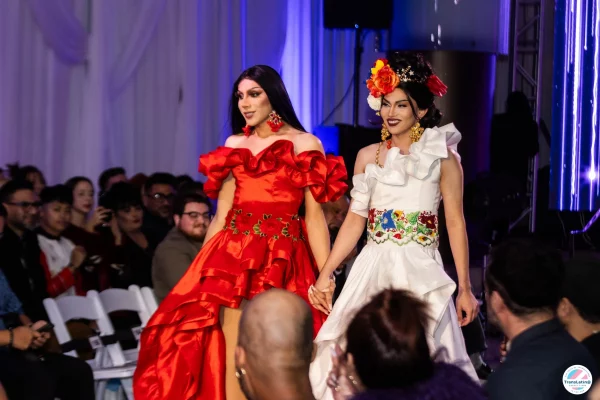
This appreciation wouldn’t be possible without Bamby. And, ending her interview to go prepare for her performance at the end of the night, this trailblazing activist assured everyone: TransLatin@ Coalition is not going anywhere.
“Despite everything that is happening, we’re still going to bring hope to all of our people,” raved Salcedo. “We have so many things in store! One of the things that I want to let people know that we’re doing is that we’re building a center, a three-story center…we’re going to continue to support our community with services and organizing, making sure that we do what we need to in order for us to continue to exist and assert ourselves in our society.”
It’s an awe-inspiring mission that has always been at the heart of this organization’s work. And, with evenings like GARRAS revitalizing our community and giving us the pure queer joy we need to power through, it’s one she welcomes everyone to join in making a reality.
For more info, head to GARRAS.org
-

 Los Angeles5 days ago
Los Angeles5 days agoLGBTQ+ community calls out Radio Korea over host’s homophobic comments; station acknowledges but skirts accountability
-
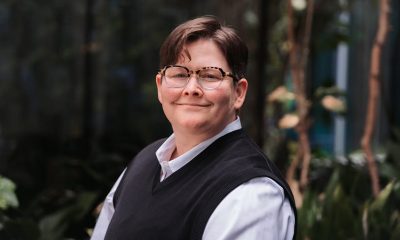
 Features3 days ago
Features3 days agoA blazing champion: Los Angeles LGBT Center’s Terra Russell-Slavin is leading this generation of queer activism
-
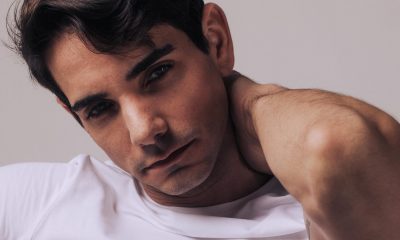
 a&e features4 days ago
a&e features4 days agoJason Caceres is the rising talent you can’t look away from – not that you’d want to
-

 Crime & Justice4 days ago
Crime & Justice4 days agoSoCal gay couple alleges Uber driver refused them service and “chased” them with a bat
-
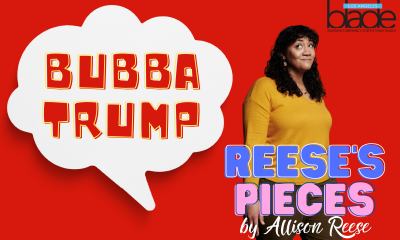
 Commentary5 days ago
Commentary5 days agoBubba Trump: the Prez and the infamous files
-
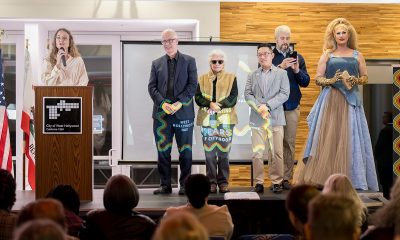
 West Hollywood22 hours ago
West Hollywood22 hours agoToday, West Hollywood celebrates 41 years of queer cityhood
-

 a&e features6 hours ago
a&e features6 hours agoNia DaCosta and Tessa Thompson on the vital queer chaos of ‘Hedda’
-
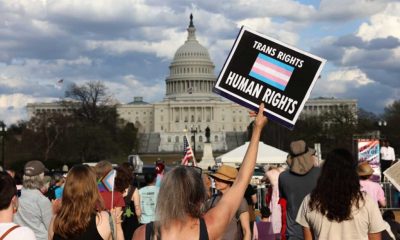
 Transgender2 days ago
Transgender2 days agoChristopher Street Project closed Trans Awareness Week with one of its strongest digital campaigns to date
-
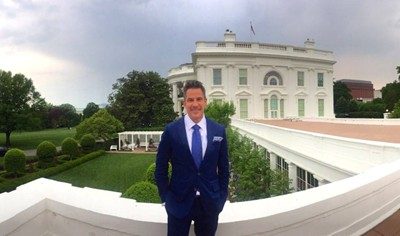
 Features2 days ago
Features2 days agoTrump’s shocking White House East Wing amputation — and the painful fallout Americans won’t ignore
-

 Features6 hours ago
Features6 hours agoWhere craft meets community: Inside Zion Liu’s and Christian Leon’s small biz ‘Here & Always’
